
The Journey of an Idea

headphones Listen Anywhere

From Conception to Innovation: The Journey of an Idea
Is the value of an idea in the eye of the beholder.

What makes an idea one that's worth pursuing? Often, an idea’s true potential is not realized until it finds the right audience or meets the right need. Just as beauty lies in the eye of the beholder, the value of an idea is determined by those who recognize its significance.
3M’s attempt to make a super glue was considered a failure until an employee realized the removable adhesive that had been invented met a need, and Post-it Notes were created. Alexander Fleming’s frustration that mold spores had contaminated his petri dish sparked an idea that what he was witnessing could become bacteria-killing penicillin. When solutions meet the right need, they become ideas that, after testing, can become innovations.
Consider the case of the viral “ crookie ” – a flaky croissant, stuffed with cookie dough. One day, Stephane Louvard, Parisian pastry chef and owner of Maison Louvard bakery, saw his workers making croissants on one table and cookies on the other and thought, what would happen if I combined them ? He baked his “crookie” pastries for regular customers for two years, and then they went viral on TikTok and the world took notice. Production is now between 1,000 and 1,600 crookies per day. The story echoes Dominique Ansel’s “ Cronut ” – a croissant-donut hybrid that captured the attraction of foodies everywhere, transforming a simple baked good into a cultural phenomenon.
These examples illustrate how an idea’s impact is determined by the audience. This is not to say creators should care about audience acceptance. The best do not. As Alan Moore, author works like Watchmen and V for Vendetta , wrote, “If the audience knew what they needed, they wouldn’t be the audience. They would be the artist.”
Mapping from idea to innovation
What turns a concept of an idea into an innovation worth pursuing? The transition happens when the idea connects with a need (the creativity connects with the audience). The journey from thought to idea to innovation can be divided into several stages:
1. The seed: An idea begins as a seed, a spark of curiosity or a playful exploration of possibilities. Remember the Albert Einstein assertion that “play is the greatest form of research.” 2. Interest: The idea fully forms but without a hypothesis of a need. 3. The search for a need: At this stage, the idea is evaluated against potential needs or problems it could solve. The search can lead along three pathways:
The idea finds a need: You’ve found the sweet spot. Once a genuine need is identified, the idea gains momentum and purpose.
It’s an idea for another time: Though you dreamed of immediate acceptance, you can’t seem to find anyone who needs it. That’s ok. This does not mean the idea has no value. IBM invented the original smartphone in 1992 but discontinued it only a year later, too far ahead of its time. Save your idea in an idea reservoir for the future.
It’s an idea for another need: Sometimes the idea is valuable, but not for the need you thought. Listerine was once promoted as a floor cleaner and the children's toy Play-Doh began as a wallpaper cleaner. Search for a different need.
Once your idea has met with a need, you’re ready to act. The idea may require adjustments or iterations to better align with its need. When the right need and solution align, the idea can blossom into a tangible innovation.
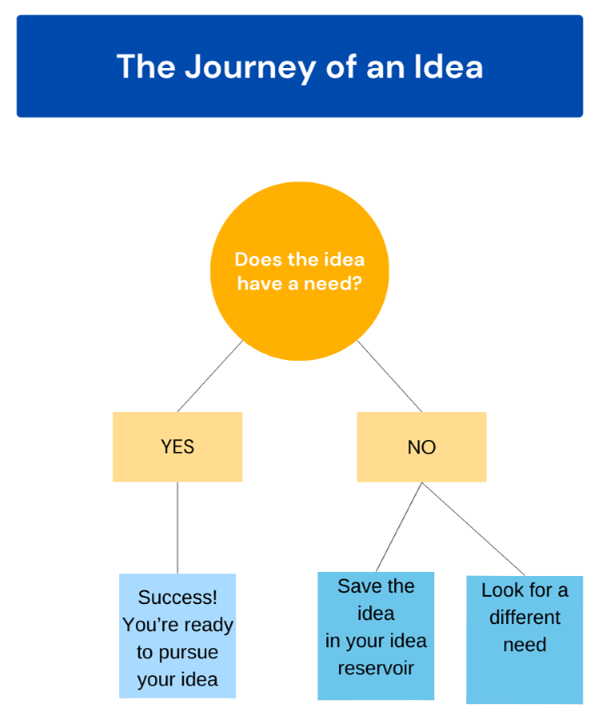
Creating idea reservoirs in organizations
Many organizations fail in their attempt to preserve ideas that haven’t found a need. They shut it down as “something we tried but didn’t work.” But other organizations recognize innovations depend on the audience as much as on the idea itself. They have a mission to match ideas to needs.
Companies like InnoCentive have embraced the power of crowdsourcing to match ideas with needs. By offering incentives and challenges, they tap into a global pool of talent and perspectives, increasing the chances of finding the perfect solution. They make it easier for ideas to find needs and needs to find ideas. Companies should also maintain idea reservoirs, keeping creations on call for the right time. We have yet to find a company that formally does this.
For a company to foster continuous innovation, it is not enough to nurture the generation of new ideas. But also, to maintain a robust "idea marketplace" – a space where ideas and needs can find each other.
Final thoughts
Innovations are born when play meets purpose, when ideas meet needs. To judge an idea by its immediate reception is to waste creative power. If we can maintain active “idea marketplaces” in which ideas can search for new needs and wait for new times, we will waste far less and open up far more possibilities.
Join the 4th Option Network
For coaches and other innovation practitioners, consider joining my global community of trusted strategic advisors, the 4th Option Network .
Ready for more?

#Expert Perspective: The Journey of an Idea
Featured faculty:.

Jill Perry-Smith

Creativity is the lifeblood of innovation and cutting-edge business. During a Goizueta Effect Podcast, Jill Perry-Smith, senior associate dean of strategic initiatives and professor of Organization & Management, spoke about her decades of work at the intersection of creativity, innovation, and business.
Creativity may come naturally for some, but everyone has the capacity to develop a creative skillset. When we think of creativity, we think of artistic expression. In the workplace, we think of breakthroughs in technology, but some of the most important creativity has to do with problem solving. In today’s flexible workspace, creativity is rewarded and encouraged.
Each new idea takes a bumpy journey as it evolves, often cycling back and forth as novelty wears, obstacles arise, and risks become clear. Though circumstances may be different, each idea journey shares distinct phases.
In the generation phase, innovators need inspiration. Sharing ideas with strangers rather than friends can be beneficial and can facilitate open-mindedness.
During the elaboration phase, creators need support and encouragement to develop their ideas. Deeply analyzing the idea with one or two other people as opposed to sharing it with a larger collective is most valuable.
While in the promotion phase, influence and reach are critical due to the risk associated with the idea and its lack of precedent. This is the time for resource gathering and professional networking.
For the implementation phase, shared vision and trust are needed. At this point, a cohesive team with a shared north star can drive success.
So how can a business facilitate workplace creativity? Perry-Smith recommends the following:
- Encourage creativity and innovation in your workplace. Make simple changes to the way your organization and teams operate, and always ask for more problem-solving alternatives. More alternatives lead to variety and creative solutions.
- Be collaboratively flexible and reduce conformity. Think of teams as a tool that is helpful when necessary.
- Always consider novel approaches. Don’t overlook the “creative nuggets” that arise from the idea journey.
Listen to “The Journey of an Idea” podcast on Goizueta Effect.
Looking to know more or connect with Jill Perry-Smith?
Simply click on her icon now to arrange an interview and a time.
- Undergraduate
- Executive Education
- Information Systems & Operations Management
- Organization & Management
- Business & Society
- Entrepreneurship & Innovation
- Alternative Investments
- Marketing Analytics
- Business, Public Policy, and Government
- Submit Class Note
- Update Your Info
- Find Your Expert
- Experts on Hot Topics
- Faculty in the News
- Press Releases

The Journey of an Idea

Creativity is the lifeblood of innovation and cutting-edge business. During a Goizueta Effect Podcast, Jill Perry-Smith , senior associate dean of strategic initiatives and professor of Organization & Management, spoke about her decades of work at the intersection of creativity, innovation, and business.

Creativity may come naturally for some, but everyone has the capacity to develop a creative skillset. When we think of creativity, we think of artistic expression. In the workplace, we think of breakthroughs in technology, but some of the most important creativity has to do with problem solving. In today’s flexible workspace, creativity is rewarded and encouraged.
Each new idea takes a bumpy journey as it evolves, often cycling back and forth as novelty wears, obstacles arise, and risks become clear. Though circumstances may be different, each idea journey shares distinct phases.
In the generation phase , innovators need inspiration. Sharing ideas with strangers rather than friends can be beneficial and can facilitate open-mindedness.
During the elaboration phase , creators need support and encouragement to develop their ideas. Deeply analyzing the idea with one or two other people as opposed to sharing it with a larger collective is most valuable.
While in the promotion phase , influence and reach are critical due to the risk associated with the idea and its lack of precedent. This is the time for resource gathering and professional networking.
For the implementation phase , shared vision and trust are needed. At this point, a cohesive team with a shared north star can drive success.
So how can a business facilitate workplace creativity? Perry-Smith recommends the following:
- Encourage creativity and innovation in your workplace. Make simple changes to the way your organization and teams operate, and always ask for more problem-solving alternatives. More alternatives lead to variety and creative solutions.
- Be collaboratively flexible and reduce conformity. Think of teams as a tool that is helpful when necessary.
- Always consider novel approaches. Don’t overlook the “creative nuggets” that arise from the idea journey.
Listen to “The Journey of an Idea” podcast on Goizueta Effect.
RELATED ARTICLES MORE FROM AUTHOR

Alumni Honored at Annual Alumni Awards Ceremony

Students Learn from Entrepreneur Alumni and Compete in Pitch Contest at 8th Annual Entrepreneurship Summit
The Avatar as Instructor
Recent posts.

EMORY BUSINESS MAGAZINE
Preparing the workers of the future.

Introducing the 2023 Sheth Fellows

3rd Annual “Siggie” Awards Announces Call for Nominations

Shopping Cart
No products in the cart.
The 5 Phases of Ideation: How to Go from Idea to Execution
All businesses start with an idea. But not all ideas are created equal. Some ideas are just that – ideas – and never amount to anything more. Others are carefully planned out and executed flawlessly. Which type of business do you want to be? If you’re unsure, don’t worry – we’ll help you figure it out! In this article, we will discuss the 5 phases of ideation: generating ideas, vetting ideas, developing ideas, testing ideas, and launching ideas. By following these steps, you’ll be able to take your idea from concept to reality.
Phase 1 is generating new ideas
This is the most important phase, where you come up with as many ideas as possible. You can use brainstorming techniques like freewriting or mind mapping to generate new ideas. Once you have a list of potential ideas, it’s time to move on to the next phase.
Recommendation: 6 Ways to Market Your Brand on LinkedIn for Maximum Exposure
Phase 2 is sorting through and selecting the best ideas
In Phase 2 of Ideation, you must sort through your ideas and select the best ones. This can be done in various ways, but it is important to have a system for sorting through and selecting the best ideas. One way to do this is to create criteria for what makes an idea good. These criteria can be anything from how well the idea solves the problem to how original the idea is. Once you have created these criteria, you can start sorting your ideas and selecting the best ones.
Another way to sort through and choose the best ideas is to get input from others. This can be done by holding a brainstorming session with a group of people or by asking for feedback from others. Whichever way you sort through and select the best ideas, it is vital to have a system in place so that you can quickly and easily identify the best ideas.
Phase 3 is developing and refining your selected idea
Most people never get beyond the first two phases of ideation, and as a result, they never bring their great ideas to fruition. But with a little effort, you can break through those barriers and move on to Phase 3: developing and refining your idea. This is where the real work begins, as you take your selected idea and shape it into a more concrete plan.
There are a few key things to keep in mind during this phase:
- Don’t be afraid to experiment and try different approaches;
- Always be thinking about how you can simplify and streamline your idea;
- Make sure you’re constantly communicating with your team (if you have one) to get their feedback and input.
If you can successfully navigate Phase III, you’ll be well on turning your idea into a reality.
Phase 4 is testing your idea to see if it’s viable
This is where you start to put your idea into action. You need to create a plan for how you will test your idea to see if it will work. This could involve market research, developing a minimum viable product (MVP), or doing preliminary testing with customers. If your idea passes this phase, you can move on to phase five and start executing your plan.
If you want your business to be successful, you mustn’t skip any of these steps in the ideation process. Each one is essential for taking your idea from concept to reality. So take your time, research, and ensure you’re happy with your idea before putting it into action.
Recommendation: How Freelancers Can Use LinkedIn to Best Market Themselves
The final phase, phase five, is implementing and executing your idea
Now that you have a great idea, it’s time to implement it. This phase is about taking the steps necessary to make your idea a reality. This may include creating a business plan, finding investors, setting up shop, and more. There are many things to do in this final stage , but with hard work and perseverance, you can make your dream a reality. Congratulations, and good luck!
Want to understand the future of marketing, business and personal finance?
Related articles.

30 Ways to Make Money Online: Quick and Easy Methods
There are so many side gigs, freelance jobs, and ways to make money online these days. The problem is figuring out which one will work…

14 Steps to Build a Personal Brand Business
Building a personal brand for your business is one of the most important things you can do when running a company. We know that you…

How to Map Out Your Ideal Career Path
What’s your ideal career? Do you know what it looks like? How about the steps you need to take to get there? If not, don’t…

How to Write a Business Proposal
We all know how important it is to write a business proposal. These proposals are often the difference between whether or not you get the…

Advanced High-Output Management Techniques for Managers and Founders
High-output management is a powerful approach that allows managers and founders to streamline operations, boost productivity, and drive meaningful growth. While basic high-output management techniques…
Your email address will not be published. Required fields are marked *
Save my name, email, and website in this browser for the next time I comment.
Cancel reply
There was a problem reporting this post.
Block Member?
Please confirm you want to block this member.
You will no longer be able to:
- See blocked member's posts
- Mention this member in posts
- Invite this member to groups
- Message this member
- Add this member as a connection
Please note: This action will also remove this member from your connections and send a report to the site admin. Please allow a few minutes for this process to complete.
- Mar 24, 2022
The Journey of an Idea: An Entrepreneur’s Guide to Visual Thinking

Written by Marita Herkert-Oakland, co-founder of Relumed
When my co-founder and partner, Eric Oakland, and I were starting to form the vision for Relumed, we often found ourselves getting stuck. Eric, the more vision-oriented of the two of us, would start thinking about all of the possibilities of what we could build, from the highly practical to the…more unrealistic (in my opinion).
When he would start talking about all of these ideas and possibilities, I would start to think about the more practical aspects of what he was suggesting. As you can probably guess, I’m the more process-oriented one.
What often happened was that one or both of us would become frustrated. But we couldn’t figure out when and where the breakdown was happening in these conversations. That is until Eric tried drawing it out.
The quick sketch that he made, using only lines and circles, became a guide for us through these conversations. It offered something tangible for us to point to, to show the other where we were in the process of thinking through our big ideas. For us, as it turns out, Eric naturally spent more time in Stage 2 of our process, while I would test out all ideas by moving them along to stage 3. Now we had a shared understanding of how we were working.
As an entrepreneur, you likely have had similar experiences, where you find that you don’t have the tools necessary to get your ideas out of your head and to share them with those around you. A tool that isn’t often well-considered is something you may naturally use without realizing it – like Eric did. That tool is visual thinking.
Visual thinking is the use of visuals to capture, communicate, and process ideas and information quickly, often in real-time. And using visuals throughout your entrepreneurial journey can transform the way you share ideas and collaborate.
There are four skillsets that you can develop to become a visual thinker:
Visual Skills (unsurprising), or learning to use simple shapes and icons in your work
Adaptive Skills , or developing filtering skills and frameworks for conversations
Sharing Skills, or learning how to communicate with others using visuals
Tools, or finding the right visual medium to collaborate and share ideas
We call these four skillsets the VAST Framework for visual thinking. By incorporating them into your work, you can experience the same clarity that Eric and I had when he quickly sketched out our “Journey of an Idea”.
Let’s Get Visual
Most of us are familiar and content with using words and text to share information because it’s cheap and fast. We write reports and often communicate via Slack or email. But words have their limits. Words alone are more easily forgotten and prone to confusion than visuals. While that idea may make intuitive sense – who doesn’t like an eye-catching infographic – communicating with visuals is not part of many people’s daily collaborative work.
Being more visual in communication and collaboration increases understanding and memory of any topic. This can be as simple as including more found images, snapping pictures, or creating visual aids when you are talking with your team.
Going beyond visuals that are already available to you, I want to challenge you to think about drawing as part of your entrepreneurial skillset. Drawing is a highly flexible skill that many people have innate ability in. It’s easy to learn the basics, and allows you to add a visual layer to a conversation on any topic, anytime, anywhere. In the Journey of an Idea, Eric used only lines and circles to draw out an idea. That’s all you need to get started.
3 Tips to Get Started Using Visuals
Identify the “Minimum Viable Pencil” skills needed for effective visual thinking. This MVP is more basic than you may expect. Find a typical conversation or topic that tends to get complicated and practice drawing out the big idea.
Get a Firm Grip on Drawing Basics . When I say “drawing”, I mean very simple shapes, lines, and maybe icons. Practice making your notes more visual or thinking through a meeting plan in a visual way. Start simple and before long, you will be looking for places to draw!
Develop a Simple Visual Language that Applies to your Work. Find a few icons that you can easily draw that represent key ideas in your work or language that is unique to your business. When you pair a few select images with the frameworks we will discuss shortly, you will have opened up new ways to talk about your business.
Become Adaptive And Ready For Anything
As an entrepreneur, you are used to being flexible. You can pivot an idea. You can switch gears when an investor starts asking about something you hadn’t planned to address. And you can show up as a marketer in the morning, an HR professional in the afternoon, and maybe even a therapist in the evening, depending on how the day went. Visual thinking is just as flexible in the ways that it can support your work.
Being adaptive in visual thinking is about knowing how to visually support a conversation by filtering important information and using frameworks to visually organize it. Filters are similar to goos listening skills – what is the speaker trying to say? What are the main ideas? What questions are raised? Is everything clear?
Frameworks are like visual templates. They can give structure to a conversation and make sure that you are capturing all of the important ideas. In our Journey of an Idea, Eric actually created a template that we could use for future ideas.
Filters and frameworks can be learned and utilized on the fly, or they can be planned out ahead of a conversation.
3 Tips to Use Filters and Frameworks in Your Entrepreneurial Work
Practice filtering conversations for the most important information : On your next Zoom call, try taking some notes. What ideas are you capturing? Notice where you ask follow up questions or where someone summarizes a point. Those are good indications that an idea is important.
Identify One Place Where Visual Thinking Could Bring Value to Your Team : Is there a meeting that tends to get stuck? Or where people don’t leave knowing why they were there? Maybe it is something that you have been wrestling with for awhile and you need a new way to approach the conversation. Any of these could be places where you could try a visual framework.
Make a Meeting Agenda Visual : Create a visual framework for your daily standup. Or make your 1:1’s visual. If you have a standard meeting, try making a visual framework out of the agenda.
Share Your Ideas with Anyone
So far, I’ve challenged you to use a little bit of drawing in your work and to start to hear with visuals. Now, we think about how to use these skills in any setting. Sharing ideas with visual thinking is about infusing visuals into many different areas of your work.
When you use visuals to process your own ideas, you begin to externalize and organize your thoughts. That frees up space for you to see things in new ways or to better articulate questions. If you never share your visual thinking, you will still benefit as an entrepreneur.
But the value that you will experience is multiplied when you use visuals to bring your team together for brainstorming and alignment. In groups, sharing can happen in different ways. It can happen when one person provides a visual presentation of an idea to others. Sharing also happens when someone captures a conversation visually in real-time for people to clarify and respond to ideas. Everyone present benefits from the visualization even if only one or two people are providing the visual support. A little goes a long way.
In our Journey of an Idea, Eric listened to our conversations, drew a visual on his own, and then presented it to me for us to use as a visual piece to our conversations.
3 tips for when to use visuals in your work
Introduce visual thinking to your team with a meaningful experience: This may be through taking a visual thinking course or by bringing in a visual facilitator to get your team started.
Support individuals who want to develop visual thinking skills: When we work with people to teach visual thinking, we often hear about the fear people have about drawing for others or the shame they experienced in the past about their creative skills. So if someone is interested in using visuals in their work, support and encourage them!
Be intentional about applying and reinforcing visual thinking in your operations: When something isn’t reinforced, it will be forgotten. You can build visuals into your daily work with by making your meeting agenda more visual. Or you can develop a habit of asking someone on the team to take visual notes. Start small and see where it goes.
Find the Right Tools
One of the first things people want to talk about with visual thinking is tools and tech. We save it for the end because, once you know the fundamentals of bringing visuals into your work, you can use any available tool effectively. Also, it helps make our VAST acronym work.
Visual thinking tools can be analog or digital. When you think about using visuals at work, you likely think about whiteboards first. A whiteboard can be a great place to collaborate. So can paper.
Digital options for visual thinking are getting pretty good. You can use digital collaboration platforms like Miro or Mural. You can bring a remote team together on Butter. Even Zoom has a whiteboard screen sharing option. Many of these tools will allow you to draw using a stylus or use built-in options like sticky notes and shapes.
Whatever you choose to use for yourself or your team, remember that it takes time and practice to become comfortable with any tool.
When Eric created the Journey of an Idea, he used a drawing app with an iPad and Apple Pencil because he was creating something on his own that he then shared with me.
3 Tips for Finding the Right Visual Tools
People will use what works for them : As you are practicing bringing visuals into your work, pay attention to what you prefer using and stick with that. If you prefer a whiteboard, jumping to a drawing app is going to take time.
Find the right tools for team collaboration : If your team works remotely, find options that allow you to collaborate visually.
Save it! Take the time to set up processes for storing and sharing visuals generated through collaboration.
So the next time you are thinking through big ideas for your startup or trying to get people to see what you see, grab a pen, jump up to the whiteboard, or open a Miro board and let visuals guide you.
If you are looking for ways to develop your visual thinking skills, I invite you to check out our course, Unlocking Visual Thinking , or to join our free monthly workshops , where we test out visual thinking together.
- Productivity
Recent Posts
StartingBlock 2023 Holiday Gift Guide
Exploring Madison's Startup Hub: The Vision Behind StartingBlock
The Role of Co-working Spaces in Startup Growth: Insights from StartingBlock
Comentarios

- May 20, 2023
Navigating the Entrepreneurial Journey: From Idea to Execution
The path of entrepreneurship is a grand journey, a challenging endeavor filled with triumphs and setbacks strewn with opportunities and risks. Aspiring entrepreneurs embark on this path fueled by an idea, a product, or a service vision that can create a tangible impact on the world. But how does one transform an idea into a successful business venture? This two-part guide aims to shed light on the process, unraveling the steps from idea generation to successful execution.
Part I: The Genesis of an Idea
1. Identifying Opportunities
The initial spark that ignites the entrepreneurial journey often comes from identifying a gap in the market. It might be a product that doesn't exist, a service that's lacking, or an existing solution that can be significantly improved. Recognizing these opportunities requires a keen sense of observation, an understanding consumer needs, and the ability to foresee trends and changes in the market landscape.
2. Refining the Idea
Once an opportunity is identified, the next step is to refine the idea into a viable business concept. This involves conducting thorough market research, understanding the target demographic, and identifying the unique value proposition of the proposed product or service. The goal is to shape an idea that fulfills a market need and stands out from the competition.
3. Building a Business Model
With a refined idea, the focus now shifts to developing a sustainable business model. How will the business generate revenue? What are the costs associated with producing the product or delivering the service? A sound business model should address these questions, outlining the path from investment to revenue generation.
4. Assembling a Team
No entrepreneur can journey alone. Building a competent team is critical for transforming an idea into a successful venture. The right team should possess the necessary skills and experience and align with the entrepreneurial vision and values.

Part II: From Planning to Execution
1. Crafting a Business Plan
A business plan is a roadmap that guides the entrepreneurial journey from idea to execution. It outlines the business's goals, strategies for achieving them, and the time frame for their achievement. It also provides a detailed market analysis, competition, operational structure, and financial projections.
2. Securing Funding
With a solid business plan, the next step is to secure the necessary funding. This could come from various sources, including personal savings, loans, angel investors, or venture capitalists. The key is to present a compelling case for the business's potential for profitability and growth.
3. Implementing the Plan
The implementation phase is where the entrepreneurial journey truly begins. This involves setting up operations, developing the product or service, hiring staff, and starting sales and marketing efforts. It's a phase characterized by action, adaptation, and constant learning.
4. Sustaining and Scaling
Once the business is up and running, the focus shifts to sustainability and growth. This applies to continually monitoring the market, adapting to changes, improving the product or service, and scaling operations. At this stage, the entrepreneur's role evolves from a doer to a leader, overseeing the strategic direction of the business while empowering the team to execute effectively.
Part III: Navigating Challenges and Celebrating Success
1. Overcoming Obstacles
Challenges and obstacles characterize every entrepreneurial journey. These could be operational issues, financial constraints, market competition, or unexpected changes in the business environment. The key to overcoming these obstacles lies in resilience, adaptability, and problem-solving abilities. It's essential to view challenges as opportunities for learning and growth.
2. Evaluating and Adjusting Strategy
As the business evolves, it's important to continually evaluate and adjust the strategy. This involves tracking business performance against set objectives, analyzing market trends, and staying aware of competitive activities. If the business is not achieving its goals, the strategy may need to be tweaked or overhauled.
3. Fostering a Positive Business Culture
The culture of a business significantly influences its success. A positive culture encourages employees to give their best, drives customer satisfaction, and shapes the business's reputation. Fostering a positive culture requires conscious efforts, such as promoting open communication, appreciating employee contributions, and ensuring a supportive and inclusive work environment.
4. Expanding and Innovating
For sustained growth, businesses need to continually expand and innovate. The expansion could involve entering new markets, adding new product lines, or scaling up operations. On the other hand, innovation is about staying ahead of the curve, continually improving products or services, and finding new ways to deliver value to customers.
5. Celebrating Success
Finally, it's important to celebrate success - both big and small. Celebrating success boosts morale, fosters a sense of accomplishment, and motivates the team for future challenges. Remember, entrepreneurship is not just about reaching the destination; it's also about enjoying the journey and celebrating the milestones along the way.

The entrepreneurial journey is a fascinating and challenging voyage of discovery that demands courage, resilience, and constant learning. From the conception of a business idea through the stages of planning and execution, and finally, in overcoming obstacles and celebrating successes, each phase provides its own unique lessons and experiences.
In essence, entrepreneurship is a journey that intertwines an individual's life's personal and professional aspects. It's a path filled with excitement, challenges, failures, and triumphs. The reward lies not just in the successful enterprise's destination but also in the journey itself, with all its opportunities for learning, growth, and personal fulfillment.
As the entrepreneurship landscape evolves, fuelled by technological advancements and changing market dynamics, the path ahead is more promising than ever. Aspiring entrepreneurs have many resources and tools to turn their innovative ideas into successful businesses. The journey may be daunting, but with the right mindset, tenacity, and support, the entrepreneurial dream is within reach for anyone willing to embark on the journey.
- Entrepreneurship
Recent Posts
Entrepreneurship Guide: Know who you walk with
Entrepreneurship 101: The Dos and Don'ts of entrepreneurship
For the busy bee: 7 ways to make time for your side hustle

- crookie , ideas , innovation , Kaihan Krippendorff , Outthinker
From Conception to Innovation: The Journey of an Idea

Mapping from idea to innovation
- The idea finds a need: You’ve found the sweet spot. Once a genuine need is identified, the idea gains momentum and purpose.
- It’s an idea for another time: Though you dreamed of immediate acceptance, you can’t seem to find anyone who needs it. That’s ok. This does not mean the idea has no value. IBM invented the original smartphone in 1992 but discontinued it only a year later, too far ahead of its time. Save your idea in an idea reservoir for the future.
- It’s an idea for another need: Sometimes the idea is valuable, but not for the need you thought. Listerine was once promoted as a floor cleaner and the children’s toy Play-Doh began as a wallpaper cleaner. Search for a different need.
Creating idea reservoirs in organizations
Final thoughts, join the 4th option network.
- Kaihan Krippendroff
- April 29, 2024
Kaihan Krippendorff to Speak
We know that it can be stressful and difficult in selecting a speaker and organizing events.
You have made the right choice to work with Kaihan and his team. We are here to help make things easier for you. We strive to be responsive and will do everything we can to make your event a resounding success.
PHONE: +1 212-380-7919
© 2023 – Kaihan Krippendorff – All rights reserved.
- Skip to main content
- Skip to FDA Search
- Skip to in this section menu
- Skip to footer links

The .gov means it’s official. Federal government websites often end in .gov or .mil. Before sharing sensitive information, make sure you're on a federal government site.
The site is secure. The https:// ensures that you are connecting to the official website and that any information you provide is encrypted and transmitted securely.
U.S. Food and Drug Administration
- Search
- Menu
- Animal & Veterinary
- Resources for You
- Animal Health Literacy
From an Idea to the Marketplace: The Journey of an Animal Drug through the Approval Process
STARTING POINT: An idea FINISH LINE: An approved animal drug on the market
Many of us may not be familiar with the path to the finish line, so let’s break it down to see how an animal drug makes the journey from being an idea to a product on the market.
Helpful Definitions
Drug sponsor, approved new animal drug, major and minor species, conditional approval and indexing, common misconceptions, a brief summary of the drug approval process.
The Longer Version
The Beginning: The Idea
The first steps: open communication.
- Target Animal Safety
- Effectiveness
- Human Food Safety
- Chemistry, Manufacturing, and Controls
Environmental Impact
- All Other Information
The Freedom of Information Summary
- The End: The Puzzle is Complete
Over-the-Counter versus Prescription versus Veterinary Feed Directive Animal Drugs
Generic animal drugs, cvm’s stamp of approval, animal drugs @ fda.
CVM – Center for Veterinary Medicine FDA – Food and Drug Administration FFDCA – Federal Food, Drug, and Cosmetic Act NADA – New Animal Drug Application OMUMS – Office of Minor Use and Minor Species Animal Drug Development ONADE – Office of New Animal Drug Evaluation
To understand the journey, we need to understand the term “drugs.” The Federal Food, Drug, and Cosmetic Act (FFDCA) defines the term “drugs” to include, among other things, “articles intended for use in the diagnosis, cure, mitigation, treatment, or prevention of disease in man or other animals” and “articles (other than food) intended to affect the structure or any function of the body of man or other animals.” (See Section 201(g)(1)(B) & (C) of the Federal Food, Drug, and Cosmetic Act [21 U.S.C. 321(g)(1)(B) & (C)] .)
The intended use of a product determines if it’s a drug. Here are a few examples to illustrate this concept:
- When a company sells bottled water for people to drink as a beverage, the water is not a drug. But if the company sells those same bottles of water as a cure for cancer in dogs, then the water is a drug under the FFDCA because the intended use is to cure a disease (cancer) in dogs.
- When a company sells formaldehyde for a car manufacturer to use to make automotive parts, it’s not a drug. But when a company sells formalin—a solution of formaldehyde—for a fish biologist to use to kill external parasites on finfish, it’s a drug under the FFDCA because the intended use is to treat a disease (parasitism) in fish.
- When a company sells a product claiming it makes cows ovulate at the same time, the product is a drug. Although it’s not treating or preventing a disease in the cows, the product’s intended use is to change how their bodies function, which makes it a drug under the FFDCA.
The FFDCA gives the U.S. Food and Drug Administration (FDA) the legal authority to approve and regulate drugs for both people and animals. A drug intended for use in animals is called a new animal drug. FDA’s Center for Veterinary Medicine (CVM) approves and regulates new animal drugs.
CVM is made up of six offices that work together to approve new animal drugs and monitor the drugs after they are on the market. The Office of New Animal Drug Evaluation (ONADE) is the “pre-approval office,” meaning that it is the lead office for reviewing the information about a new animal drug before it is approved.
Now, let’s define “drug sponsor.” For the purpose of this article, a drug sponsor is the entity responsible for collecting all the information about a new animal drug and submitting this information to CVM for review.
Who can be a drug sponsor? Any organization, or even one person, can be a drug sponsor. For example, scientific research groups; government agencies, such as the U.S. Department of Agriculture; and academic organizations, such as colleges and universities, can all be drug sponsors. But typically, drug sponsors are pharmaceutical companies.
Together, CVM and the sponsor guide the drug through the approval process.
We also need to understand what it means for a drug to be an approved new animal drug. An approved animal drug is one that has gone through the New Animal Drug Application (NADA) process and has received CVM’s stamp of approval.
Just as high school seniors who want to attend college must go through the college application process, drug sponsors who want to make and sell animal drugs must go through the NADA process. A high school senior uses a college application to formally ask a school for acceptance. The college application tells the senior’s story, including all the information about the student’s extra-curricular activities and grades in high school. Likewise, a drug sponsor uses a NADA to formally ask CVM to approve a new animal drug. The NADA tells the drug’s story and contains all the information about the drug.
CVM’s approval of the NADA means the animal drug is safe and effective when it is used according to the label.
“Safe” includes safety:
- To the animal; and
- Of food products made from the treated animal, if the drug is for use in food-producing animals.
“Effective” means the drug consistently does what it is expected to do.
CVM’s approval also ensures that the drug’s strength, quality, and purity are maintained from batch to batch and that the drug’s labeling is truthful, complete, and not misleading.
Two other important factors that the center considers during the NADA process are:
- The drug’s impact on the environment; and
- The safety of the people who will give the drug to the animal or who may come in contact with the drug.
A new animal drug can be for companion (pet) animals, such as dogs, cats, and horses; or for food-producing animals, such as cattle, pigs, and chickens. A new animal drug can also be for minor species or for a minor use in a major species. CVM classifies horses, dogs, cats, cattle, pigs, chickens, and turkeys as the seven major species. All other animals, such as fish, ferrets, and goats, are minor species. A minor use in a major species is the use of a drug in one of the seven major species for a condition that occurs:
- Infrequently and in only a small number of animals each year; or
- In a limited part of the country and in only a small number of animals each year.
For example, the use of a drug to control pain in dogs with bone cancer is a minor use in a major species because relatively few dogs get bone cancer each year.
If the drug is for a minor species or a minor use in a major species, both ONADE and the Office of Minor Use and Minor Species Animal Drug Development (called “OMUMS” for short) are involved in the review process. Learn more about minor species and minor uses by visiting these webpages: Lions and Tigers and Bears! OMUMS! and Minor Use/Minor Species .
Besides the standard NADA process, two additional pathways to the marketplace are available for drugs used in animals, depending on the situation. These two pathways are:
- Conditional approval. This pathway is available only for some drugs for use in a minor species or in a major species under special circumstances.
- Indexing. This pathway is available only for drugs for certain minor species.
Learn more about conditional approval and indexing by visiting these webpages: Conditional Approval Explained: A Resource for Veterinarians and Drug Indexing .
Back to the top
Now, we need to clear up some common misconceptions about the drug approval process.
Misconception: The drug approval process starts with CVM. Truth: The drug approval process starts with the drug sponsor. The sponsor conducts initial research on a potential new animal drug, and if the research is promising, the sponsor contacts CVM to start discussions about the drug and the approval process.
Misconception: CVM tells the drug sponsor which new animal drugs to research and develop. Truth: The drug sponsor decides which new animal drugs to research and develop for possible approval. CVM and the sponsor discuss what information is needed to get a drug approved.
Misconception: CVM tests a new animal drug for safety and effectiveness. Truth: The drug sponsor is responsible for testing a new animal drug for safety and effectiveness. CVM reviews the results of the tests to determine if the drug is safe and effective and meets the approval requirements.
The drug sponsor collects information about the safety and effectiveness of a new animal drug. The sponsor may need to conduct studies to get this information. For any studies that are performed, the sponsor analyzes the results.
Based on the collected information, the drug sponsor decides if there is enough proof that the drug meets the requirements for approval. The sponsor must prove that the drug is safe and effective for a specific use in a specific animal species. If the drug is for food-producing animals (like cows or chickens), the sponsor must also prove that it’s safe for people to eat food from treated animals, such as meat, milk, and eggs.
If the drug sponsor decides the drug meets the requirements for approval, the sponsor submits a New Animal Drug Application (NADA) to CVM. The NADA includes all the information about the drug and the proposed label.
A team of CVM personnel, including veterinarians, animal scientists, biostatisticians, chemists, microbiologists, pharmacologists, and toxicologists, reviews the NADA. If the center's team agrees with the sponsor’s conclusion that the drug is safe and effective when it is used according to the proposed label, CVM approves the NADA and the drug sponsor can legally sell the drug.
The Longer Version
ADUFA – Animal Drug User Fee Act CVM – Center for Veterinary Medicine INAD – Investigational New Animal Drug NADA – New Animal Drug Application ONADE – Office of New Animal Drug Evaluation
The journey to drug approval begins with the drug sponsor having an idea about a new compound. Perhaps this new compound has certain qualities that may make it a useful drug to treat bovine respiratory disease in cattle. The sponsor researches and develops the new compound and conducts initial (“pilot”) laboratory studies on it for a specific use (called an “indication”) in a specific animal species (called the “target animal species”). In the example above, the indication is the treatment of bovine respiratory disease and the target animal species is cattle. If the results of the pilot studies are promising and there is a potential market for the drug, the drug sponsor contacts CVM to officially start the drug approval process.
The key to a smooth journey to drug approval is open and early communication between the drug sponsor and CVM. The drug sponsor starts this communication by contacting ONADE to open an INAD file, discuss ADUFA fees, and discuss the development plan for the new animal drug. The sponsor may first contact ONADE simply to talk about the best ways to share scientific information about a promising new animal drug.
INAD stands for Investigational New Animal Drug. Typically, the drug sponsor opens an INAD file in the beginning of the drug approval process. The sponsor then uses the file as a way to correspond with CVM throughout the journey.
ADUFA stands for the Animal Drug User Fee Act. Originally passed in 2003, ADUFA authorizes CVM to collect fees from drug sponsors to support the center’s review of animal drugs. A similar “user fee” system was created in 1992 for drugs for people. Learn more about ADUFA by visiting the following webpage: Animal Drug User Fee Act (ADUFA) .
A development plan discussion is usually held early in the drug approval process. As part of the development plan, ONADE and the drug sponsor discuss, and generally agree on, the information needed to get the drug approved, including the number and types of studies that may be required and the overall design of each study.
The Puzzle Pieces
Let’s think of the drug approval process as a puzzle. Before starting the puzzle, the drug sponsor has to figure out the dosage form of the drug and the dosage regimen that will be on the drug’s label.
The dosage form is the drug’s physical form when it comes out of the manufacturing facility. There are several types of dosage forms, including oral and injectable. A drug given by mouth is an oral dosage form. Tablets and capsules are two variations of an oral dosage form. A drug that is injected under the skin, into muscle, or into a vein is an injectable dosage form. A solution is a common injectable dosage form.
The dosage regimen includes:
- How much of the drug to give (the dose);
- How often to give it (the frequency);
- How long to give it (the duration); and
- How to give it (the route of administration). Various routes of administration include injecting the drug under the skin, into muscle, or into a vein; giving the drug by mouth; or applying the drug topically to the skin.
The Major Technical Sections
The five major technical sections are the biggest pieces of the drug approval puzzle:
- Target Animal Safety;
- Effectiveness;
- Human Food Safety;
- Chemistry, Manufacturing, and Controls; and
- Environmental Impact.
Target Animal Safety The drug sponsor must show that the drug is safe to the target animal species when it is used according to the label. (The target animal species is the specific animal species that the drug will be used in.) To prove the drug’s safety, the sponsor typically conducts a target animal safety study in a small number of healthy animals.
The two goals of a standard target animal safety study are:
- To identify any harmful side effects of the drug; and
- To establish a margin of safety for the drug. The margin of safety is usually determined by testing the drug at higher-than-labeled doses for a longer-than-labeled time period in the target animal species. The drug’s margin of safety is like a “cushion” or “safety net” to make sure the drug will be safe when it is used in animals that may be sick or sensitive to the drug.
During the study, the sponsor collects safety information on the drug by:
- Examining the animals;
- Observing their behavior;
- Looking at the results of their blood tests; and
- Looking at their tissues and organs both grossly (with the naked eye) and under a microscope.
For some drugs, there may be additional safety questions that may not be answered in a standard target animal safety study. For example, if the drug might be used in pregnant mares, CVM may ask the sponsor for information on the safety of the drug in breeding horses. The center may sometimes ask the sponsor to conduct a special case study, for example, a study done in a specific dog breed that may be extra-sensitive to the drug. An injection site irritation study is a common special case study that CVM usually requires for a drug that is injected into a food-producing animal. This type of study shows how injecting the drug affects the skin and muscle of treated animals.
The drug sponsor also collects safety information on the drug during any effectiveness studies that are done.
Effectiveness The drug sponsor must show that the drug works in the target animal species when it is used according to the label. One way for sponsors to prove that the drug is effective is by conducting a field study. In a field study, all the animals in the study have the disease or condition that the drug will be used for. For example, if the drug will be used to treat urinary tract infections (UTIs) in dogs, a dog must have a UTI to be in the field study. The goal of the field study is to make sure the drug will do what it is expected to do when it is used under normal (“field”) conditions and according to the label.
Human Food Safety This puzzle piece is only for drugs intended for food-producing animals. When a food-producing animal is treated with a drug, residues of the drug may be present in or on food products made from that animal. Food products made from treated animals must be safe for people to eat. To show that the food products are safe, a drug sponsor usually conducts what are called human food safety studies. The goal of these studies is to make sure the level of drug residues in or on food products made from treated animals will not harm people.
If the drug is an antibiotic intended for food-producing animals, the sponsor also conducts human food safety studies to assess how likely it is that antibiotic-resistant bacteria will enter the food supply in or on food products made from treated animals. All animals normally have bacteria in and on their bodies. When an animal is treated with an antibiotic, all the bacteria in and on that animal are also exposed to the drug. Some of the exposed bacteria may become resistant, meaning that the antibiotic, and possibly similar antibiotics, may no longer work against those bacteria.
Resistance to antibiotics is a growing public health concern for both people and animals, and antibiotic-resistant bacteria that enter the food supply may add to the problem.
There are four slices of the human food safety puzzle piece:
- Toxicology: By looking at detailed information about the drug in laboratory animals, toxicologists at CVM determine the “acceptable daily intake,” or “ADI.” The ADI is the largest amount of the drug in a person's diet that is not harmful even if he or she consumes that amount every day.
- How the animal's body gets rid of it.
- How the animal's body breaks it down; and
- Where the drug goes in the animal's body;
- Microbial Food Safety: To determine if an antibiotic can be safely used in food-producing animals, CVM’s microbiologists first look at the drug’s ability to cause bacteria to become resistant. Second, the microbiologists look at the impact of that resistance on public health, and if the impact is potentially negative, they determine if the risk is acceptable.
- Analytical Method: CVM’s scientists make sure the drug sponsor develops appropriate and accurate methods for measuring residues in a specific edible tissue (for example, liver, kidney, or milk). These methods are used to test the tissue to make sure the drug residues aren’t above the legal tolerance.
Chemistry, Manufacturing, and Controls In the Chemistry, Manufacturing, and Controls (CMC) technical section, the drug sponsor describes the plan for making the drug. This plan includes:
- What ingredients will be used to make the drug;
- Where the ingredients will come from;
- Where the drug will be made;
- How it will be made;
- How it will be packaged;
- How it can be stored (under what conditions); and
- How long it can be stored (this is important in determining the drug’s expiration date).
A big portion of the CMC puzzle piece is looking at what tests the drug sponsor will use to make sure the drug is high-quality and safe. Another important part is deciding when FDA’s investigators should inspect the manufacturing facilities where the drug is made. When an inspection is needed, FDA’s investigators work with scientists at CVM to make sure the manufacturing facilities are using the correct equipment and methods to consistently produce a high-quality and safe drug.
CE – Categorical Exclusion CVM – Center for Veterinary Medicine EA – Environmental Assessment EIS – Environmental Impact Statement FONSI – Finding of No Significant Impact NEPA – National Environmental Policy Act
Under the National Environmental Policy Act (NEPA), CVM must consider how the environment will be affected if the center approves an animal drug. To do this, the center requires that drug sponsors prepare an Environmental Assessment (EA). This assessment describes how much drug is expected to get into the environment and its potential environmental effects.
If CVM determines that the drug will not significantly impact the environment based on the information in the EA, the center writes what is called a “Finding of No Significant Impact,” or “FONSI” for short. If CVM determines that the drug will significantly impact the environment, the center writes an Environmental Impact Statement (EIS).
Learn more about environmental impact considerations by visiting the following webpage: Environmental Impact Considerations .
A drug sponsor can ask CVM for a “categorical exclusion," or “CE” for short. A CE means that the drug falls into a legally-defined category that is unlikely to affect the environment. If the center grants a CE, the sponsor does not have to prepare an EA.
Two examples of when the center typically grants a CE are:
- A drug for companion animals, like cats and dogs. Because a drug for companion animals is given to one animal at a time (as opposed to a herd or flock of animals), not much of the drug is likely to get into the environment; and
- A slight change to an already-approved animal drug if the change will not increase how much drug is used or how much will get into the environment.
The Minor Technical Sections
The two minor technical sections are smaller pieces that fit into the puzzle after the five bigger pieces are complete or almost complete. These are:
- All Other Information; and
All Other Information The All Other Information technical section includes all information about the drug that the drug sponsor did not submit as part of the major technical sections. The sponsor typically collects this information from:
- Published scientific literature;
- Foreign experience, if the drug is approved in a country outside the United States; and
- Studies that were conducted but not completed at the time the sponsor submitted the major technical sections.
Labeling The term “labeling” includes all the information on the:
- Immediate container – this is the container that the drug itself comes in. Vials, bottles, syringes, and packets are immediate containers. For a drug that is in animal feed, the immediate container is the feed bag.
- Package insert – this is usually attached to the immediate container. The package insert is typically written for veterinarians who will prescribe or give the drug to animals.
- Outer packaging – this is what the immediate container comes in. For example, if a vial is packaged in a carton, the carton is the outer packaging.
- Shipping label – this is put on the larger container that is shipped from the manufacturing facility to identify the container’s contents. For example, the container may hold 12 cartons, with each carton holding one vial.
- Client information sheet – this is written for pet owners to let them know what to expect when giving the drug to their pets, including what side effects to look for. Not every approved drug for companion (pet) animals has a client information sheet.
In the Labeling technical section, CVM reviews the exact language and formatting that will be on each piece of labeling. As part of the review, CVM makes sure the labeling includes all necessary information to use the drug safely and effectively and the risks associated with the drug. The center also makes sure the labeling is truthful, complete, and not misleading.
The Last of the Puzzle Pieces
The Freedom of Information (FOI) Summary is a public document describing the safety and effectiveness information that supports CVM’s decision to approve the new animal drug. It includes summaries of studies that were done and explains the basis for the center’s approval.
Learn more about FOI Summaries by visiting the following webpage: Freedom of Information (FOI) Summaries for Approved Animal Drugs .
The End: The Puzzle is Complete!
CVM approves the NADA if the information submitted by the drug sponsor meets the requirements for approval. After CVM approves the drug, the center publishes a notice of approval in the FEDERAL REGISTER. The new animal drug has now completed its journey through the approval process, and the drug sponsor can legally sell the drug.
CVM – Center for Veterinary Medicine NADA – New Animal Drug Application OTC Drug - Over-the-Counter Drug Rx Drug - Prescription Drug VFD Drug - Veterinary Feed Directive Drug
The approval process is the same for any new animal drug, whether it’s an over-the-counter (OTC), prescription (Rx), or veterinary feed directive (VFD) drug. All must go through the NADA process, but one difference between these three categories of animal drugs is whether CVM has determined that veterinary oversight is required for the safe and effective use of the drug. If the center determines that adequate “directions for use” can be written on the drug’s label in such a way that a non-veterinarian can use the drug safely and effectively, then it can be marketed as OTC. If not, then the drug must be marketed as either Rx or VFD.
Both Rx and VFD drugs require veterinary oversight to be used safely and effectively. The main difference between these two categories of animal drugs is whether the drug is used in or on animal feed. When the drug is for use in or on animal feed (a medicated feed), CVM approves it as a VFD drug. When the drug is not for use in or on animal feed, the center approves it as an Rx drug. Federal law makes it clear that VFD drugs are not Rx drugs. A VFD drug requires veterinary oversight without invoking state pharmacy laws for an Rx drug that are unworkable for medicated feed.
An Rx animal drug can be dispensed only by or on the lawful written order of a licensed veterinarian and must have the following statement on the label:
"Caution: Federal law restricts this drug to use by or on the order of a licensed veterinarian."
A VFD is a written order issued by a licensed veterinarian in the course of the veterinarian’s professional practice that authorizes the client (the owner or other animal caretaker) to obtain and use a VFD drug in or on animal feed. A VFD animal drug must have the following statement on the label:
‘‘Caution: Federal law restricts medicated feed containing this veterinary feed directive (VFD) drug to use by or on the order of a licensed veterinarian.’’
Learn more about VFD drugs by visiting the following webpage: Veterinary Feed Directive (VFD) .
AGDUFA – Animal Generic Drug User Fee Act ANADA – Abbreviated New Animal Drug Application CVM – Center for Veterinary Medicine GADPTRA – Generic Animal Drug and Patent Term Restoration Act
After an approved brand name animal drug has been on the market for a specific number of years, another drug sponsor can start the approval process for a generic copy . (The approved brand name animal drug is also called the “reference-listed new animal drug product” or the “pioneer” animal drug.) Rather than the full New Animal Drug Application process that a brand name animal drug goes through, a generic animal drug goes through the Abbreviated New Animal Drug Application (ANADA) process. The process is “abbreviated” because the drug sponsor doesn't have to conduct new safety and effectiveness studies with the generic animal drug. The Generic Animal Drug and Patent Term Restoration Act (GADPTRA) established the approval process for generic animal drugs in 1988.
For CVM to approve a generic animal drug, the information in the ANADA must show that the generic copy has the same quality, performance, and intended uses as the approved brand name drug. The drug sponsor must prove to CVM that the generic copy is the same as the approved brand name animal drug in:
- Active ingredient;
- Dosage form; and
- Dosage regimen, including route of administration.
The information in the ANADA must also show that the generic copy is bioequivalent to the approved brand name animal drug. This means that the generic drug is absorbed by and performs the same way in the animal’s body as the brand name drug.
CVM requires that the generic drug be manufactured under the same strict manufacturing standards as the brand name drug. The manufacturing processes for the generic copy must consistently produce a product that is the same as the brand name animal drug in identity, strength, purity, and quality.
Also, the labeling for the generic copy must match the labeling for the approved brand name animal drug. The labeling may differ only in items that are specific to the generic drug, such as trade name, logo, and company name and address.
In 2008, the Animal Generic Drug User Fee Act (AGDUFA) established a “user fee” system similar to the system for brand name animal drugs. AGDUFA authorizes CVM to collect fees from drug sponsors to support the center’s review of generic animal drugs.
Learn more about GADPTRA and AGDUFA by visiting the following webpages: Generic Animal Drug and Patent Term Restoration Act (GADPTRA) and Animal Generic Drug User Fee Act (AGDUFA) .
Whether the drug is a brand name animal drug or a generic copy or whether it’s an over-the-counter, prescription, or veterinary feed directive animal drug, CVM’s stamp of approval stands for safety and effectiveness when the drug is used according to the label. The rigorous journey through the drug approval process protects the health of both animals and people by ensuring that only safe, effective, and high-quality animal drugs make it to the market, while unsafe animal drugs and those that do not work are kept off.
Animal Drugs @ FDA is a searchable online database that includes most FDA-approved and conditionally approved animal drugs. You can search this database in several ways, such as by the drug’s proprietary name (also known as the trade name or brand name) or active ingredient. Indexed animal drugs aren’t listed in Animal Drugs @ FDA.
- Share full article

The Interview
Anne Hathaway Is Done Trying to Please
Credit... Devin Oktar Yalkin for The New York Times
Supported by

By David Marchese
- April 27, 2024
This is the debut of The Interview, The New York Times’s new weekly series, featuring in-depth conversations with fascinating people. Each week, David Marchese or Lulu Garcia-Navarro will speak with notable figures in the worlds of culture, politics, business, sports, wellness and beyond. Like the Magazine’s former Talk column, the conversations will appear online and in print, but now you can also listen to them in our new weekly podcast, “The Interview,” which is available wherever you get your podcasts. Below, you’ll find David’s first interview with the actress Anne Hathaway; Lulu’s first interview, with the Israeli opposition leader Yair Lapid, is here .
Listen to the Conversation With Anne Hathaway
On one level, Anne Hathaway’s new movie, “The Idea of You,” which arrives on Prime Video on May 2 and is directed by Michael Showalter, couldn’t be more straightforward. It’s an adaptation of Robinne Lee’s hit romance novel about Solène, a divorced 40-year-old mom played by Hathaway, who winds up in a relationship with a much younger man — a singer in a boy band, played by Nicholas Galitzine. Warmhearted and with unabashed mainstream appeal, the film is a return for the New Jersey-raised actress, who has fruitfully spent much of her time lately playing thornier characters in indie films, to the kinds of charming fish-out-of-water tales that first helped bring her to stardom, like “The Princess Diaries” and “The Devil Wears Prada.” This time, though, instead of being the plucky ingénue thrust into a glamorous, high-pressure situation, Hathaway is playing a character who’s coming into a new world a little less starry-eyed, and with a firmer sense of self.
But “The Idea of You” also works on another, more complicated, even self-referential level. It’s a movie about a woman pushing against societal expectations and getting a lot of grief for it, which is something Hathaway, 41, knows about. More than a decade ago, around the time she won an Academy Award for her work in “Les Misérables,” the online commentariat turned on Hathaway for … who knows, exactly? Some strange groupthink kicked in that caused people to pile on her for seeming like an inauthentic striver — or something. Other than as a case study in the inexplicable and random cruelty of the internet, the whole phenomenon, described at the time as Hathahate, makes even less sense now than it did then.
Since that time, Hathaway told me when we talked twice last month, she has been learning to let go of other people’s opinions and expectations of her as an actress, a celebrity and a human being. This has made her work even more compelling to watch and made her more guarded as a public figure. “I really like expressing myself through my work,” says Hathaway, who after so many years and so many great performances is still figuring out the best way to play the puzzling real-life part of a famous actress.
There are a bunch of things that are intriguing to me about the new movie. One of them is that there are a few of what I took to be Anne Hathaway psychological Easter eggs sprinkled throughout the film. I’ll get to those, but first: You haven’t done a romance in a while. Can you talk to me about why you wanted to do “The Idea of You”? It’s such a softball question, and I can feel my brain complicating it.
Go as complicated as you can. I still find it so much more natural to express my thoughts and feelings through characters and through the story. So a part of me wants to be like: Just see the movie. That’s why I wanted to make it. But I should probably be able to describe it. So, this is a movie about a woman healing her heart after a massive trust trauma, and it says that a bloom can happen in a person’s life at any stage. I found myself almost possessed with the need to explore what those two things meant and looked like.
I’m curious about the nature of that possession. Was it abstract, or did it connect to you in a direct way? Oh, it was completely direct. My character, Solène, might not seem like the most complicated character I’ve ever played. There’s no accent, there’s no particular gait — I love a character’s gait. But she felt familiar. I recognized aspects of myself in her. I recognized aspects of friends or women I admire. She had a richness to her, combined with this idea that early in her life she had been a people pleaser. I was excited by that idea of somebody at a place in their life where they’ve grown out of that phase.

I’m glad you brought up that people-pleaser line. That was one of the Easter eggs: “A people pleaser from New Jersey.” Yes.
But before I get into that, my vote for best Anne Hathaway character gait in a movie: “The Dark Knight Rises.” So much swagger! I worked with a choreographer for three weeks to find that swagger.
Really? Yes, I did. Because — oh, this is going to sound like a weird sentence — I wasn’t connected enough to my hips. I kept imagining a cat’s movement and the way it’s fluid and swishy but also strong and purposeful, and they helped me find my hips.
You need to introduce me to that choreographer, because not being connected enough to my hips describes most of my life problems. We are going to follow up, because I have so many thoughts! I didn’t feel connected to my body early in my life. It was this weird thing.
Why weren’t you connected to your body? That’s a great question. I mean, it would take me 41 years to answer that. It’s so many things, but I think it’s just assumed that we have a relationship with our body. Like you: Something you know about yourself is that you do not have a relationship with your hips.
Not a good one. But if somebody said, Here’s a path for you to have one, what would you do?
Oh, boy. I don’t know how to answer that. Let’s move on. Sure. Where are we going? We’re going to the knees or the torso?
I want to go back to the people-pleaser line. I interpreted the inclusion of the line “a people pleaser from New Jersey” as pretty intentional. Can you talk to me about why that line is in there? Well, she had to be from somewhere, and yeah, it might have been me who suggested that line. Maybe. Possibly.
Am I wrong in interpreting that line as self-referential? You are a people pleaser from New Jersey, right? I think I’m a former people pleaser from New Jersey. So much of the reason I was drawn to acting is that it was an outlet for expression that I could not find on my own. And in the space between feeling so connected when I was acting and so lost when I wasn’t, you try to make your way, and one of the ways that you make your way is, “Oh, if I do this, that will make someone else happy, and maybe that’s what I’m supposed to be doing.” It takes a long time to go, “That doesn’t really matter if you don’t know who you are.” Unless you just want an identity that’s all about pleasing people. Which I suppose is perfectly valid. But I’m not that nice.
It was interesting for me to revisit your work and see what I took to be — and I don’t mean this in a condescending way — an eager-beaver quality. I’m thinking of “The Devil Wears Prada” or “The Princess Diaries.” I think your character in “Valentine’s Day” had that, and in a slightly spikier way maybe “The Intern.” Was that quality something you consciously tried to change? I was not aware of it until this conversation. But I think there’s a thread that runs through those characters: someone trying to do something that they might not be comfortable with but think is the right thing to do. The thing I was interested in about Solène was this idea that, turning 40 and knowing who she was in a professional sense, knowing who she is as a mother, she had not necessarily given herself full freight to explore aspects of herself as a person.
Forty years old is a real milestone for people. But there’s also something weird about our cultural fixation on the arbitrary age of 40. I’m curious how you think about middle age. I don’t take it that seriously. There are so many other things I identify as milestones. I don’t normally talk about it, but I am over five years sober. That feels like a milestone to me. Forty feels like a gift. The fact of the matter is I hesitate at calling things “middle age” simply because I can be a semantic stickler and I could get hit by a car later today. We don’t know if this is middle age. We don’t know anything.
This makes me sound like a New Age-y ding-dong, but — Go there. Come on. Let’s bring it out. Where are your crystals? I’ve got incense burning. Let’s do this.
What you said is exactly right: We can’t take for granted how much life we have left. But internalizing that, so that we can treat each day like it could be the last, is the hardest thing to do. As a formerly chronically stressed young woman, I just remember thinking one day: You are taking this for granted. You are taking your life for granted. You have no idea. Something could fall through the sky, and that would be lights out. So when I find the old instincts rising, I just tell myself, You are not going to die stressed.
This is a small question but maybe invites a big answer: What were you so stressed about? I didn’t know how to breathe yet. That was really complicated. I mean, it’s too — you’re right. It’s actually too big an answer and the simple answer is literally everything. I was very in my head about a lot of things.
Your answer to that question was about breathing. Earlier you alluded to not feeling comfortable in your body. Those are somatic things. You must have felt very alienated from your body. I love that you identified it as somatic. It feels a little too exposed to discuss the alienation I felt from my body, but there was a lot of somatic stress there.
Was drinking a way of dealing with that? Probably.
Fair enough. Let me ask you a goofier question now. OK. [Laughs.]
Then I’m going to circle back around to heavier stuff. The plot of the film turns on a trip to Coachella. Have you ever been to the festival? I have been to Coachella. Paul McCartney was the headliner, so it was magical.
Can I tell you a quick Coachella story? It can even be long.
I used to work for music magazines, and we had to cover the festival. So one year, it was too hot; I didn’t have enough water; I was drinking beer all day, taking other stuff, and by the end of the day I was fried and physically uncomfortable — You were so tweaked out.
I was like, I got to get out of here. And we had a plan that we would meet in the press area and someone would drive us back to our hotel. But I thought: I can’t wait. I’ll walk back to our hotel — it was 15 miles or whatever in the desert at night. I left the festival and within about 10 minutes realized I’m lost in the desert. No cars are coming by. My mind is totally foggy. I’m going to die on the highway trying to walk back to my hotel. Then a car pulls up and it’s my co-worker come to save me. They rescued you!
I got in the car and was like, “Thank god, I’ve been here forever, I didn’t know what I was going to do.” Then he looks at the clock: Like 22 minutes had passed. No. [Laughs.]
I was not at risk of dying. But to you, those 22 minutes —
Longest 22 minutes of my life. Well, I’m so happy everything went OK. Coachella is very dehydrating.
Very dehydrating. You know, I feel like I’ve danced around this: I’m wondering if you can tell me more about the change in you from a stressed-out person who’s, in your words, in her own head, to the person you are now. I don’t want to go into specifics too much, because I like to keep my personal things personal, but there was a moment in my life where — I don’t know. Do you ever have this feeling where you feel like you have yourself in the future, your best possible choice, turn around and guide you? Now I’m sounding very New Age.
Explain more about what you mean. I was just stuck in this feeling. It’s that thing about, I want to achieve things, I want to grow, and you think, mistakenly, that the way you do that is to be really hard on yourself. You drive yourself by self-criticism. I won’t go into the specifics, but there was a moment in which I realized that in order to keep that narrative alive, I was going to have to deny so much. I just said: You’re just going to have to accept that if nothing else happens to you, you’ve had a really great life. You have been given gifts and opportunities. And for you to continue to walk on this path, not being grateful, I don’t think that’s really who you are. It felt like a light went on.
What are the things that you want to achieve? What are the ambitions? Honestly, I don’t want to say, because they feel great to me, and I worry if I shared them and they got shredded — I don’t want to feel bad about them.
This is another one of the potential Easter eggs or self-referential lines that I picked up on in the film: There are a couple of references to Solène’s being picked apart on the internet. Did your experience going through that inform the character? Yes.
Can you tell me in what ways? Not really. It’s in the film.
Oh, phooey. Sorry. Look, what I can tell you is that, from personal experience, I knew that everything we were saying was true.
I can’t believe I just said “phooey.” Phooey.
Phooey! Oh, bluggernston!
In this conversation I’ve tried to create a throughline or arc to your career. Do you see a throughline or arc? I like to look toward the horizon rather than back at what I’ve done. I don’t watch my films. I love that so many of my movies are the films that you cuddle up with; I’m aware of that aspect of it, but the concept of having a name is weird. The idea of having a name that signifies something that could qualify as an Easter egg, it’s not a concept that I think about a lot.
Is anything cooking with a “Princess Diaries 3”? Yep.
Can you tell me more about that? I don’t think it would be nice.
There you go. I don’t want you to think you’re trapped here. I’m not trapped.
If you’re OK to go a little longer — I can leave this dinner party at any time. Have you read the book “Acts of Service”?
No. What is it? It’s a spicy book, but that’s a great line in it. A character finds herself exploring a situation that is uncomfortable but tantalizing to her, and she keeps thinking that I can leave this dinner party at any time I want.
Wait, does that mean you find this conversation uncomfortable but tantalizing? I’m finding this conversation really lovely.
Oh, good. I’m uncomfortable sometimes because I think you want me to reveal personal things, and I’m allergic to that. But I think that we’re having a wonderful time anyway.
In an ideal world, I always want people to be as personal as possible, but I also understand that that’s something that someone might not want to do, and that’s OK. I just find it hard to imagine that people are interested. I have a hard time making that leap.
You’ve also had the experience of people not being nice to you online. So I understand that it’s not as straightforward as I’m making it out. You’re right, and again, I find it hard to imagine that people would be interested in me. That’s one reason that I don’t know that I’m a very good celebrity. I don’t really know where the walls are between being intimate and narcissism and self-regard. And because of what I went through, I’m sensitive to the way it can come across. So I’d rather be cautious. The odd thing is that as soon as you stop recording this? All the details you want. But I’m probably not the best interview.
A few weeks later, I called Hathaway back to talk more about that caution.
I have a hunch that maybe you’re a ruminator. Is there anything about our conversation to this point that you’ve been thinking about? I had a slight word-choice remorse moment. You asked me what my goals are and I decided not to share them and the reason I gave was because I’d rather not have them “shredded.” That seemed a little harsh. I regretted that.
How would you rephrase it? I think I would rephrase it by saying it’s too tender. It’s a little less self-important.
Do you think it’s telling that your mind initially went to “shredded”? Oh, yeah. I think that’s some scar tissue. I understand why I said it, but it’s not actually reflective of how I feel. It’s what I fear, but not what I feel.
Something that I wanted to return to was: What are the things that used to stress you out so much? I’m just trying to make it more tangible. My goal is to heal it and not relive it. I’m not trying to be evasive. I don’t spend a great deal of time thinking about it because I feel that I found a window and I climbed through it. I work hard to just be present. Like I said, I’m more grateful. I’m more settled in myself. I’m less afraid of things not happening. You know, the time in which I was an emerging adult was a different time. We weren’t having the types of conversations that we were having now.
Can I tell you a blindingly obvious realization about my own hypocrisy? Tell me everything.
When I’m asking you to make things more tangible or to go deeper, I’m thinking about that in light of the exchange that we had about hips. You asked me a question and I got the heebie-jeebies. I thought, I’m not talking about that. No!
Is the feeling that I had the feeling that you have doing these things? You know what it does? It puts me in a defensive position. Not defensive in the sense that I feel attacked but defensive in the sense that it’s hard to say something revealing with a tape recorder there. So I feel like I become a more self-conscious, more neutral version of myself. I watch other actresses, and they’re so free, they’re so off the cuff. Not that they’re more revealing, they’re just — I don’t know. I don’t have a word for it. We don’t usually ask people such direct questions. That’s not the way conversations are usually built. Normally trust is established by sharing something about ourselves and you build up a mutual understanding. So a part of me just resists the form of this.
It’s totally weird! And also just slightly rude. [laughs] But that’s just me. I need to work on accepting that this is just the way this is built.
As someone who’s interested in the life that animates the work, I’m curious about what it’s like to be you . That interest is obviously rooted in an assumption that having some understanding of you outside your work matters in some way. Do you think it matters? I think I understand the question. That my life is somehow as interesting as my work?
Or that for people to have an understanding of who you are outside the work is meaningful. I don’t want to distract from it. Also, going back to the thing about direct questions and whether I get the heebie-jeebies, I’m just very protective. The press can be opportunistic. I have this awesome story about Nick [Galitzine] that I want to tell. It’s on the tip of my tongue, but I don’t want to tell it, because I haven’t asked him if it’s cool and I’m aware that he’d have to answer questions about it for the next three months to 30 years.
Like the way that, I’m sure somewhat annoyingly, you’re still being asked questions, including by me, about bad experiences you had on the internet a lifetime ago? No, no. I don’t find you annoying. I value what you do. Just because I’m not the most innately forthcoming person doesn’t mean I don’t think that this isn’t a wonderful forum. I’m just amazed by people who can just express themselves.
You express yourself in different ways. I love expressing myself through my characters. You know, also I think — no, nevermind.
“I think — nevermind.” Bingo! Give me another 25 years. Maybe I’ll relax a little more.
I’ll get back in touch. I want to end on something fun though.
Tell me a funny story. You know what? When I was making “The Idea of You,” I was so spoiled, staying in a beautiful house in Atlanta, Georgia, that was much larger than my needs. I would get home from work, and I’d be in this house by myself, and that was giving me the heebie-jeebies. I was trying to figure out, like, why was I feeling this so intensely? And I realized there was no laughter in the house. You have a big house like that, you need laughter. So I started to listen to stand-up specials. I would come home and put them on. I got really into Adam Sandler’s “100% Fresh.” As extraordinary, beloved and iconic as Adam Sandler is, I think he’s underappreciated. I can quote you every line from “Billy Madison” and “Happy Gilmore” and “The Wedding Singer.”
Let’s trade lines from his movies: “I eat pieces of [expletive] like you for breakfast!” “You eat pieces of [expletive] for breakfast?”
You got it! “If peeing pants is cool, then call me Miles Davis.” I think that’s the line. [Laughs.] “Shampoo is better. I go on first and leave the hair clean. No, conditioner is better. I leave the hair silky and smooth. Oh, really fool? Blech, blech, blech. ” Wait for it. “Stop looking at me, Swan!” [Hathaway’s Sandler quote here wasn’t exact, but it was close enough.]
Very good! I’m taking up your time now jabbering about Adam Sandler. But this is the part that I’m talking about: I feel much more comfortable talking about Adam Sandler, whom I’ve never met, than I do talking about what makes me tick. I just need to figure out how to practice.
I hope this has been part of that practice. Thank you very, very much. Be well. Stretch your hips out!
This interview has been edited and condensed from two conversations. Listen to and follow The Interview on Apple Podcasts , Spotify , YouTube , Amazon Music or The New York Times Audio app .
Explore The New York Times Magazine
Donald Trump’s Rally Rhetoric : No major American presidential candidate has talked like he now does at his rallies — not Richard Nixon, not George Wallace, not even Trump himself.
The King of Tidy Eating : Rapturously messy food reviews are all over the internet. Keith Lee’s discreet eating style rises above them all .
What Are Animals Really Feeling? : Animal-welfare science tries to get inside the minds of a huge range of species — in order to help improve their lives.
Can a Sexless Marriage Be Happy?: Experts and couples are challenging the conventional wisdom that sex is essential to relationships.
Lessons From a 20-Person Polycule : Here’s how they set boundaries , navigate jealousy, wingman their spouses and foster community.
Advertisement

'The Idea of You' Review: Anne Hathaway and Nicholas Galitzine Rom-Com Goes Down Smooth
The 'Princess Diaries' alum plays a single mother falling for a pop star in this charming age-gap romance.
The Big Picture
- The Idea of You offers a fresh take on a well-worn story, focusing on emotional connection over power dynamics.
- Anne Hathaway's character undergoes a compelling coming-of-age journey, challenging perceptions of a midlife crisis.
- The film's focus on romance overshadows the boy band elements, leaving Nicholas Galitzine's character underserved.
It is a spectacle to see a musician onstage, dancing and singing their heart out to a crowd of people just in absolute frenzy over the performance. The starstruck feeling only intensifies when fans begin to dream about meeting that pop artist on a casual outing and fantasize about a meant-to-be romance. Yet, in The Idea of You , a book-to-screen adaptation directed by Michael Showalter , the concept of falling in love with a famous heartthrob is taken in an entirely different direction. Instead of a fan stumbling upon their idol, a nonchalant single mom (played by Anne Hathaway ) takes her teenage daughter to meet a boy band and ends up enamored by one of its lead singers (who she is only familiar with because her daughter used to be obsessed with them in middle school). As you might've guessed, the feeling is mutual, and like any traditional rom-com, love is in the air. However, beyond the romance onscreen, the film's originality lies in its ability to offer an alternate view of the term " coming-of-age ."
The Idea of You (2024)
Solène, a 40-year-old single mom, begins an unexpected romance with 24-year-old Hayes Campbell, the lead singer of August Moon, the hottest boy band on the planet.
What Is 'The Idea of You' About?
Solène, a just-turned-40 single mother, devotes her life to raising her teenage daughter Izzy ( Ella Rubin ) and keeping her art gallery in Silver Lake up and running. As she prepares for a camping trip, determined to disconnect from the world while Izzy enjoys Coachella with high school friends and her father/Solène's ex, Daniel (played by Reid Scott ), Solène is caught off guard by a sudden change of plans.
Instead of staying inside a tent next to a campfire, Solène ends up at one of the hottest music festivals of the year and happens to bump into a pop star on the way to the bathroom. The artist's name is Hayes Campbell ( Nicholas Galitzine ), a member of a major boy band called August Moon (whose sound and formation give major One Direction vibes). With an organic meet-cute and a lasting impression, things escalate between the two. However, their love bubble doesn't last long as the paparazzi and internet scrutiny takes a toll on them. This leads the couple to question whether their desire to be together is causing more harm than good.
'The Idea of You' Is Fueled By Its Leads and a Different Outlook on the Age-Gap Romance
It can be easy to be judgmental of a film like this at first glance when thinking about previous portrayals of older women dating younger men onscreen. There is a common thread of female characters preying on younger boys, often using their position of power to control their partners (who are usually minors) into being dependent on them. What sets The Idea of You apart is the natural connection that Solène and Hayes have. Their love isn't just about physical attraction (although they spend plenty of time in hotel rooms) and does not emphasize power imbalance. Both protagonists meet each other at a time when they are most vulnerable and in need of change.
Solène still feels shattered by her ex-husband's betrayal, while Hayes was propelled to stardom so early on that he often wonders whether his career is fleeting (even Izzy is no longer into his music like before). The two are on the same page about what they are in search of in the dating realm, despite their age difference. Showalter and Jennifer Westfeldt 's script has a keen eye in making this story far from a cautionary tale, giving way for Hathaway and Galitzine's undeniable chemistry to flourish. Their scenes together fuel the film with a pitch-perfect mix of charm and heat.
The actors have a lot of experience in the rom-com genre ( having starred in classics like The Princess Diaries and modern hits like Red, White, and Royal Blue ), which is a valuable asset in making this project worthwhile for viewers craving more organic and well-executed love onscreen. Although The Idea of You will land on streaming instead of getting a theatrical run, it is easy to imagine viewers at home giggling every time the couple shares a passionate kiss and sympathizing with them when the internet offers brutal judgments (especially targeted towards Solène) about their bond.
'The Idea of You' Is Also an Authentic Coming-of-Age Journey
This rom-com also deconstructs the perception that a 40-year-old woman has learned everything she needs to in life. Hathaway's character might've gained experience throughout the years when it comes to motherhood, but she is still lost in a dating scene with a limited pool. Hayes doesn't just represent her boldness in love but also ensures this is a coming-of-age journey.
What is deemed by most of the online critics as a midlife crisis becomes an awakening for Solène. It's not just about her exploring the world on private jets next to her musician boyfriend, but rather the mending of her broken heart. Although romance might be the hook here, Hathaway's journey into becoming a confident woman keeps the film interesting. The actress has a magnetism to her that makes it believable that she can be a responsible and nurturing mom, as well as a woman feeling youthful while falling for a younger man.
'The Idea of You's Boy Band Is Left Out in This Two-Person Show
Yet amid the script's nuances and the passion brought to the screen by the two leads, the supporting elements to this narrative feel irrelevant. Galitzine does have the looks, talent, and stage presence that check off the boxes for a boy band member, but the boy band itself feels like a one-man show. The music, written by Savan Kotecha , is boy band material ( after all, he also wrote music for One Direction ), but the emphasis on only Galitzine's vocals makes the whole idea of him being part of a group, rather than a solo act, unconvincing.
Although the headlines about Hayes and Solène's relationship blame her for taking his eyes off his career, there is no insight whatsoever from other August Moon members or managers into Hayes' love life, which limits the character's arc aside from the romance that unfolds onscreen. There is also barely any interaction between Hayes and Izzy, which doesn't make sense considering that she is Solène's daughter and greatest priority. In other words, sometimes it seems like the character's only function is to be a famous boyfriend. He never truly interacts with his partner's social circle and rarely engages with his own (except for Coachella, as well as a brief scene by the pool with the rest of the band in Europe).
Showalter's The Idea of You scores points when it comes to providing a nuanced view of an age-gap romance and candid performances from both Hathaway and Galitzine. Although their romance is fully developed during the film's runtime, and Solène undergoes a compelling coming-of-age journey, the music and boy band elements here don't add depth to Hayes' arc. Nonetheless, the adaptation's charming qualities outweigh the flaws, proving to be one of the better rom-coms to come out in recent years. It's enjoyable, sexy, and features a romance worth rooting for — because the only red flag here is the public's reaction to their relationship. What starts as a fling becomes something more by the end, with a pleasing finale that diverges from Robinne Lee 's novel .
Anne Hathaway and Nicholas Galitzine's age-gap romance is fueled by their chemistry, but underserves one of its protagonists.
- This rom-com brings a respectable and nuanced take on an older woman falling for a younger man.
- Hathaway's character shows that coming-of-age isn't just for the tweens.
- Hathaway and Galitzine use their rom-com experience to their advantage in this film.
- Hayes' character arc is impacted by the lack of emphasis on his music career and boy band involvement.
- Aside from the romance, Galitzine doesn't have much to work with in comparison to Hathaway.
The Idea of You is available to stream on Prime Video in the U.S. starting May 2.
Watch on Prime Video

Amazing Architecture
- {{ post.title }}
- No result found
- The Journey of Idea to the different verses - spreading the...
- The Journey of Idea to the different verses - spreading the seeds through AI

OXO ARC : Embark on a theoretical odyssey, where the journey of an idea transcends conventional realms and unfolds as an intricate narrative of novelties. This conceptual expedition, aptly termed "The Journey of Idea to Different Verses," ventures into uncharted territories, spreading its seeds through the fertile landscape of artificial intelligence.
At the core of this intellectual voyage is the revolutionary concept of sowing the seeds of creativity across varied dimensions. The journey commences with the germination of an idea, a spark of imagination nestled within the mind's fertile soil. This nascent concept, akin to a seed, carries the potential for profound growth and transformation.
The seeds of innovation find their conduit through the intricate tendrils of generative AI, a powerful force that acts as both cultivator and catalyst. AI, in this context, becomes the cosmic gardener, nurturing and propelling these conceptual seeds into different "verses" or dimensions. These realms range from the palpable reality we inhabit to the ethereal meta- world, where ideas intertwine with the abstract.
As the seeds traverse these dimensions, they encounter the dynamic interplay between the imagined and the tangible. The AI, akin to a cosmic weaver, threads the fabric of these different "verses," creating an intricate tapestry of possibilities. The idea, now germinated into diverse forms, flourishes in response to the unique attributes of each dimension.

This journey challenges traditional dichotomies, blurring the boundaries between reality and fantasy, tangible and abstract. The seeds, once confined to the mind's landscape, now transcend into the meta-world, enriching the architectural discourse with a tapestry of novel concepts and avant-garde methodologies. In this theoretical novelties, the metaphorical seeds become vessels of transformation, vessels that carry the essence of human imagination into the cosmic playground of AI. The process is not merely about ideation but about the dynamic interplay between human creativity and the algorithmic ingenuity of AI.
Ultimately, "The Journey of Idea to Different Verses" symbolizes a symbiotic relationship between the organic and the artificial, between the creator and the created. The seeds planted in the fertile soil of imagination germinate into a forest of innovative possibilities, flourishing in the diverse landscapes of our cognitive and technological ecosystems. This theoretical narrative invites us to contemplate the evolving role of AI as a co-creator in the expansive realm of creativity, challenging us to reimagine the very nature of ideation and its boundless potential.

By Alfredo Gonzalez
- Adobe Photoshop
- Artificial Intelligence
- Future Architecture
- Midjourney AI
- Yuli Sri Hartanto
- Sri Moelyono Kurniawan
- Hutan Pinus
Leave a comment
Related articles

Floating Green City by Miroslav Naskov / Mind Design

BAM Rasht, designing a cultural-commercial complex by Rezvan Yarhaghi

Yacht hub, India designed by Miroslav Naskov / Mind Design

ILO: Levitating building on Mars by Lenz Architects
GitHub Copilot Workspace: Welcome to the Copilot-native developer environment
We’re redefining the developer environment with GitHub Copilot Workspace - where any developer can go from idea, to code, to software all in natural language.

In the past two years, generative AI has foundationally changed the developer landscape largely as a tool embedded inside the developer environment. In 2022, we launched GitHub Copilot as an autocomplete pair programmer in the editor, boosting developer productivity by up to 55% . Copilot is now the most widely adopted AI developer tool. In 2023, we released GitHub Copilot Chat—unlocking the power of natural language in coding, debugging, and testing—allowing developers to converse with their code in real time.
After sharing an early glimpse at GitHub Universe last year, today, we are reimagining the nature of the developer experience itself with the technical preview of GitHub Copilot Workspace: the Copilot-native developer environment. Within Copilot Workspace, developers can now brainstorm, plan, build, test, and run code in natural language. This new task-centric experience leverages different Copilot-powered agents from start to finish, while giving developers full control over every step of the process.
Copilot Workspace represents a radically new way of building software with natural language, and is expressly designed to deliver–not replace–developer creativity, faster and easier than ever before. With Copilot Workspace we will empower more experienced developers to operate as systems thinkers, and materially lower the barrier of entry for who can build software.
Welcome to the first day of a new developer environment. Here’s how it works:
It all starts with the task…
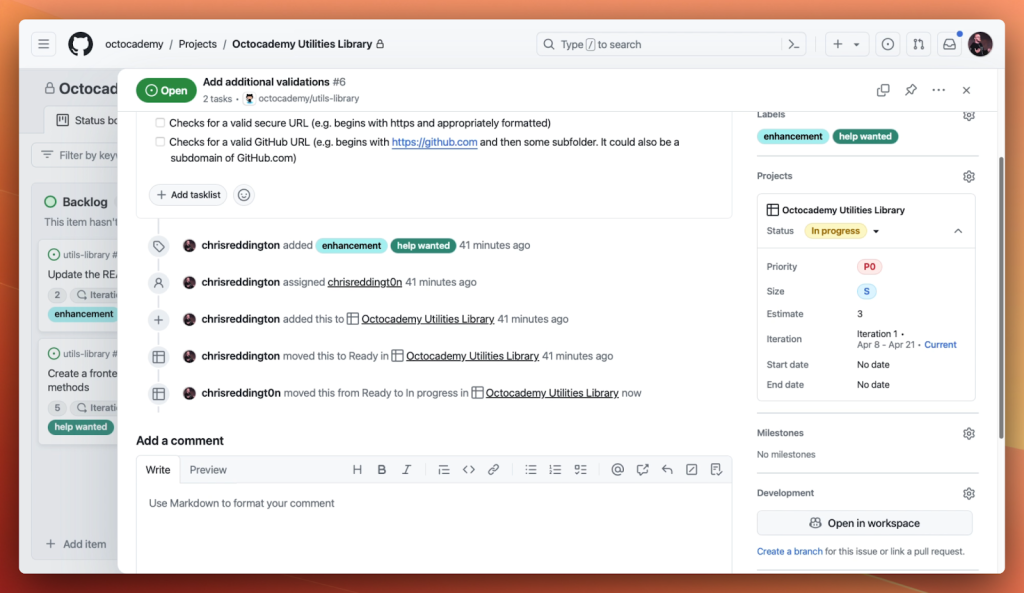
For developers, the greatest barrier to entry is almost always at the beginning . Think of how often you hit a wall in the first steps of a big project, feature request, or even bug report, simply because you don’t know how to get started. GitHub Copilot Workspace meets developers right at the origin: a GitHub Repository or a GitHub Issue. By leveraging Copilot agents as a second brain, developers will have AI assistance from the very beginning of an idea.
…Workspace builds the full plan

From there, Copilot Workspace offers a step-by-step plan to solve the issue based on its deep understanding of the codebase, issue replies, and more. It gives you everything you need to validate the plan, and test the code, in one streamlined list in natural language.
And it’s entirely editable…

Everything that GitHub Copilot Workspace proposes—from the plan to the code—is fully editable, allowing you to iterate until you’re confident in the path ahead. You retain all of the autonomy, while Copilot Workspace lifts your cognitive strain.

And once you’re satisfied with the plan, you can run your code directly in Copilot Workspace, jump into the underlying GitHub Codespace, and tweak all code changes until you are happy with the final result. You can also instantly share a workspace with your team via a link, so they can view your work and even try out their own iterations.
All that’s left then is to file your pull request, run your GitHub Actions, security code scanning, and ask your team members for human code review. And best of all, they can leverage your Copilot Workspace to see how you got from idea to code.
Also: GitHub Copilot Workspace is mobile compatible
And because ideas can happen anywhere, GitHub Copilot Workspace was designed to be used from any device—empowering a real-world development environment that can work on a desktop, laptop, or on the go.
This is our mark on the future of the development environment: an intuitive, Copilot-powered infrastructure that makes it easier to get started, to learn, and ultimately to execute.
Enabling a world with 1B developers
Early last year, GitHub celebrated over 100 million developers on our platform—and counting. As programming in natural language lowers the barrier of entry to who can build software, we are accelerating to a near future where one billion people on GitHub will control a machine just as easily as they ride a bicycle. We’ve constructed GitHub Copilot Workspace in pursuit of this horizon, as a conduit to help extend the economic opportunity and joy of building software to every human on the planet.
At the same time, we live in a world dependent on—and in short supply of—professional developers. Around the world, developers add millions of lines of code every single day to evermore complex systems and are increasingly behind on maintaining the old ones. Just like any infrastructure in this world, we need real experts to maintain and renew the world’s code. By quantifiably reducing boilerplate work, we will empower professional developers to increasingly operate as systems thinkers. We believe the step change in productivity gains that professional developers will experience by virtue of Copilot and now Copilot Workspace will only continue to increase labor demand .
That’s the dual potential of GitHub Copilot: for the professional and hobbyist developer alike, channeling creativity into code just got a whole lot easier.
Today, we begin the technical preview for GitHub Copilot Workspace. Sign up now . We can’t wait to see what you will build from here.
- generative AI ,
- GitHub Copilot ,
- GitHub Enterprise
Related posts
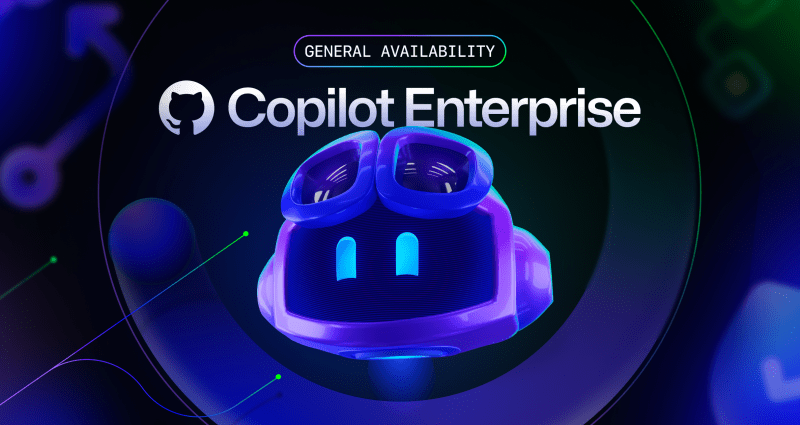
GitHub Copilot Enterprise is now generally available
Our most advanced AI offering to date is customized to your organization’s knowledge and codebase, infusing GitHub Copilot throughout the software development lifecycle.

GitHub Copilot Learning Pathway: Accelerate your business with AI
Learn what GitHub Copilot can help your business achieve in this expert-guided GitHub Learning Pathway, featuring insights from tech leaders at top organizations.

4 ways GitHub engineers use GitHub Copilot
GitHub Copilot increases efficiency for our engineers by allowing us to automate repetitive tasks, stay focused, and more.
Explore more from GitHub
Github universe 2024, github copilot, work at github, subscribe to our newsletter.
Code with confidence. Discover tips, technical guides, and best practices in our biweekly newsletter just for devs.
Anne Hathaway Gets Candid About Her 5-Year Sobriety Journey
“That feels like a milestone to me.”

Anne Hathaway is getting candid once again about her sobriety journey. In new interviews to promote her new film The Idea of You , the actor announced that she had recently celebrated being five years sober.
During an in-depth interview with The New York Times , Hathaway was asked about turning 40 in 2022 and what that meant to her. “I don’t take it that seriously. There are so many other things I identify as milestones,” she answered. “I don’t normally talk about it, but I am over five years sober. That feels like a milestone to me.”
Speaking to Entertainment Tonight at the New York premiere, Hathaway said she was proud of herself for choosing the path of sobriety . “I’m really grateful to just have been able to take the step that I needed,” she said.
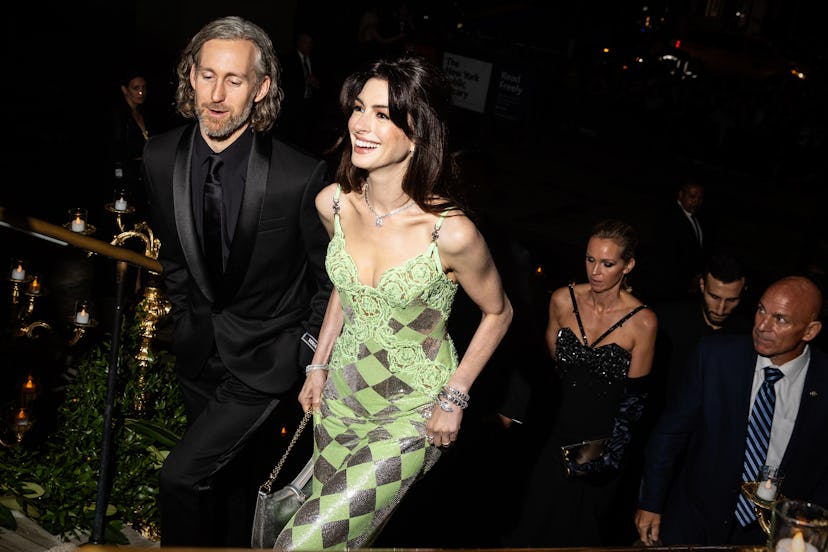
Hathaway previously announced that she was going sober during an appearance on The Ellen DeGeneres Show in January 2019, citing her then-2-year-old son Jonathan as the reason. Later that year, Hathaway and her husband, Adam Shulman, welcomed their second child, a son named Jack.
“I’m gonna stop drinking while my son’s living in my house,” she said at the time. “I don’t totally love the way I [drink], and he’s getting to an age where he really does need me all the time in the mornings… I did one school run one day where I dropped him off at school, I wasn’t driving, but I was hungover, and that was enough for me. I didn’t love that one.”
However, in a later interview with Boston Common Magazine , Hathaway made sure to clarify that she had a bigger problem with hangovers than drinking itself, saying that her last hangover “lasted for five days,” and her decision to stay sober while raising her son was not a “moralistic stance.”
“I just want to make this clear: Most people don’t have to do such an extreme thing,” she said. “I don’t think drinking is bad. It’s just the way I do it — which I personally think is really fun and awesome — is just not the kind of fun and awesome that goes with having a child for me.”
Flickering Myth
Geek Culture | Movies, TV, Comic Books & Video Games
Movie Review – The Idea of You (2024)
April 29, 2024 by Robert Kojder
The Idea of You , 2024.
Directed by Michael Showalter. Starring Anne Hathaway, Nicholas Galitzine, Ella Rubin, Annie Mumolo, Reid Scott, Perry Mattfeld, Jordan Aaron Hall, Mathilda Gianopoulos, Meg Millidge, Cheech Manohar, Raymond Cham Jr., Jaiden Anthony, Vik White, Dakota Adan, Roxy Rivera, Graham Norton, Grace Junot, and Jon Levine.
Solène, a 40-year-old single mom, begins an unexpected romance with 24-year-old Hayes Campbell, the lead singer of August Moon, the hottest boy band on the planet.
There is no denying that The Idea of You , a romantic drama in which the meet-cute involves a 40-year-old divorced mom and artist unknowingly stumbling into a 24-year-old global celebrity pop star’s trailer under the assumption it’s a bathroom while taking her 16-year-old daughter and her friends to Coachella, is ridiculous. However, co-writer/director Michael Showalter’s film is also a reminder that it doesn’t necessarily matter how improbable a romance is so long as the screenplay does something compelling with the dynamic and would-be lovers.
Admittedly, it takes a while to get to that point since the film is based on what feels more like someone’s fantasy than a novel (Michael Showalter and Jennifer Westfeldt adapting the work of Robinne Lee), but once the film confronts the reality of how difficult such an unlikely relationship would be, not to mention how judgmental and nasty society and Internet culture can be, the screenplay from Showalter and Jennifer Westfeldt leans further into a more human, grounded side of these characters that Anne Hathaway and Nicholas Galitzine convey with gripping emotion. This also means that the second half sometimes feels like it’s rushing through its thornier, more adult, and engaging material, but there is just enough tackling every subject a film with this premise probably should, barring an unnecessary, hokey epilogue that reverts to something far-fetched.
Even setting those frustrations aside, it is admirable that Michael Showalter is comfortable embracing a romantic comedy formula, aware and confident that such tropes are less irksome when the endeavor is injected with characterization. Once the story goes in a serious direction, moving on from the will-they/won’t-they part of the attraction, one practically forgets the absurdity of how these characters were brought together. That is a true, telltale sign that something is working here. It all leads to several moments of piercing emotion between two people harboring trust issues, trying to make this relationship work.
Solène (Anne Hathaway) sees all the reasons she should try resisting superstar boy band singer Hayes’s (Nicholas Galitzine) charm; he is much younger, and she has a teenage daughter (Ella Rubin) who listens to their music (although Hayes is not her crush). The world, including the ex-husband (Reid Scott) who cheated on and left her, will judge the nature of the relationship.
Is it awkward when the father drops by to pick up his daughter with a much younger man answering the door shirtless? Sure. It’s also amusing. It’s also harmless, but when the gender roles are reversed, this age gap is generally an acceptable celebrity dating lifestyle. Leonardo DiCaprio seems determined never to be caught dead dating someone older than 25, Chris Evans just married a woman in her 20s, and Billie Eilish previously dated a man in his 30s. Even movies rarely touch on the reverse of this age gap, perhaps for several reasons, but I won’t dive into those hypotheticals.
What it does come down to is that people, especially men on the Internet, will always look for reasons to attack and hurl insults at women, as if that happiness threatens them. There is a moment where Solène takes charge, determined to make the relationship work despite that. We desperately hope they are successful, completely ready to be heartbroken if it doesn’t pan out.

For whatever reason, the film sidelines the teenage daughter at a summer camp, actively avoiding this intriguing trauma in favor of watching Solène accompany Hayes on his European tour (smartly aware that music and concerts are not the main attraction of this story) filled with bonding and sex (unfortunately, the PG-13 style despite an R rating, leaving one wishing the direction went for something more steamy and sensual. This section drags on, although there are noteworthy scenes showcasing how much more mature Solène is than these younger men (obviously), as well as how sincere Hayes is with his commitment.
If it seems this review mostly only discusses the second half of The Idea of You , this is mostly a straightforward, corny rom-com until the ideas take hold. As such, it takes a while to get invested properly, but damn do Anne Hathaway and Nicholas Galitzine make a great on-screen pairing, age and social class gap be damned. The movie morphs from fantasy into something believably messy and real right before one’s eyes.
Flickering Myth Rating – Film: ★ ★ ★ / Movie: ★ ★ ★
Robert Kojder is a member of the Chicago Film Critics Association and the Critics Choice Association. He is also the Flickering Myth Reviews Editor. Check here for new reviews, follow my Twitter or Letterboxd , or email me at [email protected]
YOU MIGHT ALSO LIKE:

Hellboy: Guillermo del Toro’s Occult Superhero Fantasy at 20
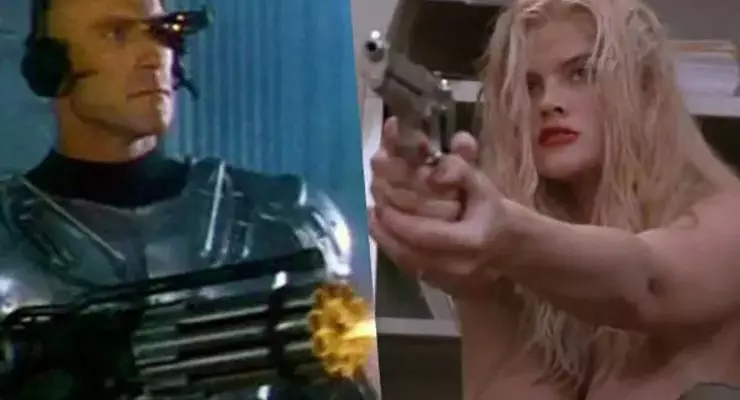
PM Entertainment and the Art of Rip-offs With Razzmatazz
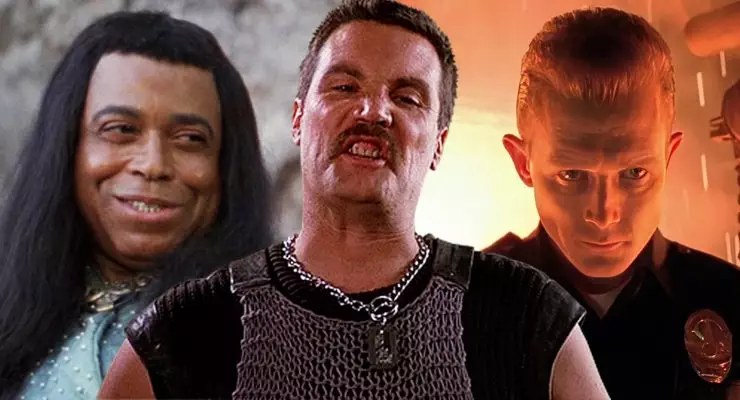
The 10 Best Villains in Arnold Schwarzenegger Movies
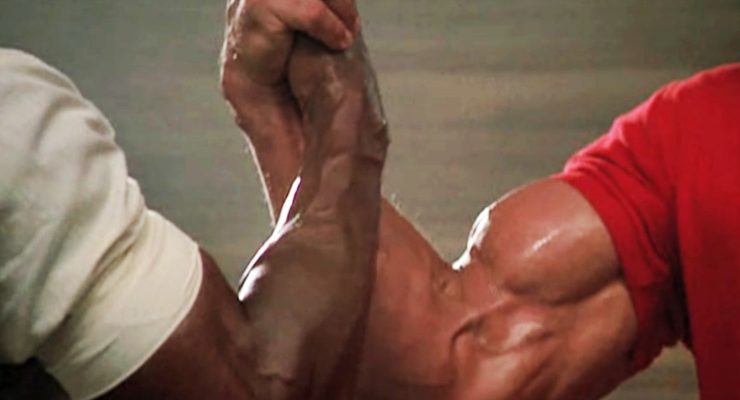
An Exploration of Bro Camp: The Best of Campy Guy Movies
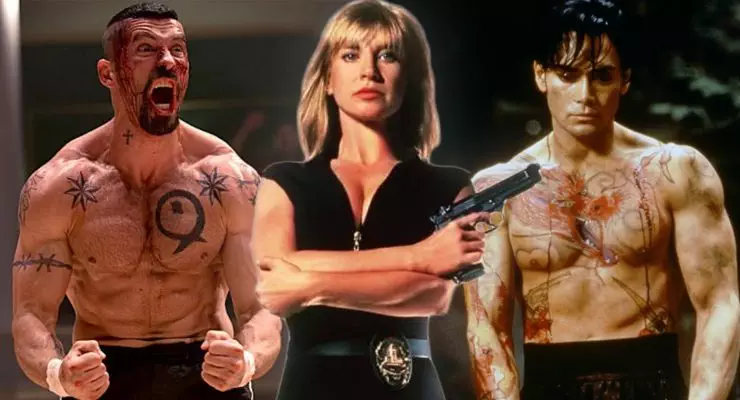
Underappreciated Action Stars Who Deserve More Love
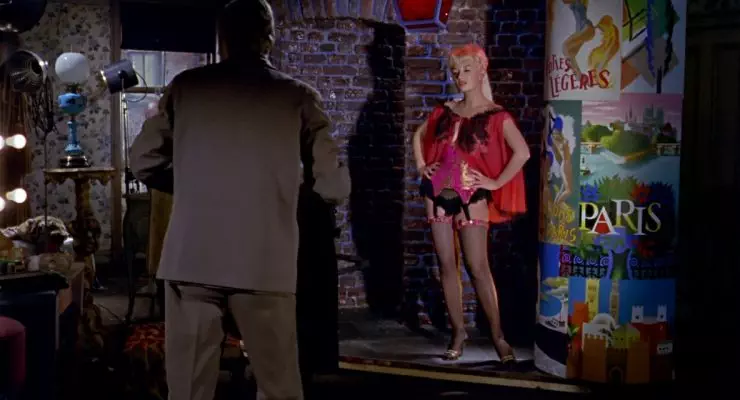
Peeping Tom: A Voyeuristic Masterpiece of the Slasher Subgenre
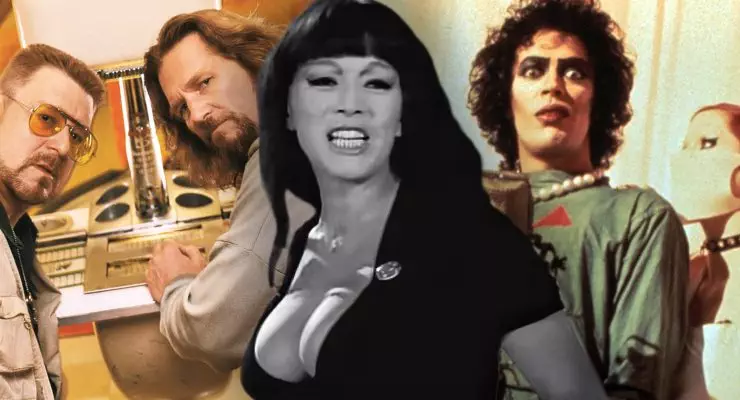
The Most Iconic Cult Classics of All Time

10 Essential Films From 1994

Dust in the Eye: Ten Tear-Jerking Moments in Action Movies
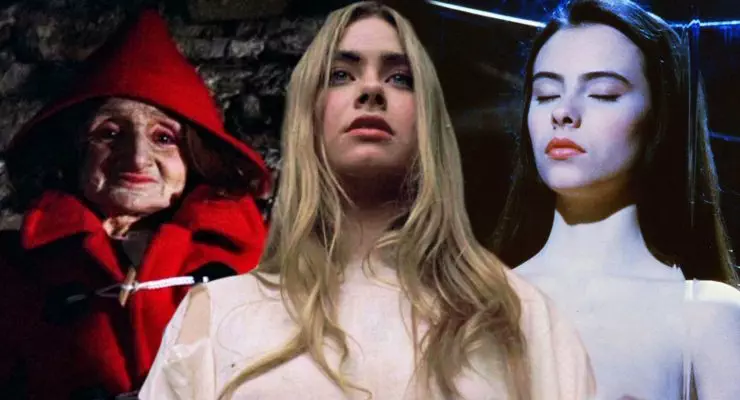
Ten Essential British Horror Movies You Have To See
- Comic Books
- Video Games
- Toys & Collectibles
- Articles and Opinions
- About Flickering Myth
- Write for Flickering Myth
- Advertise on Flickering Myth
- Terms of Use
- Privacy Policy
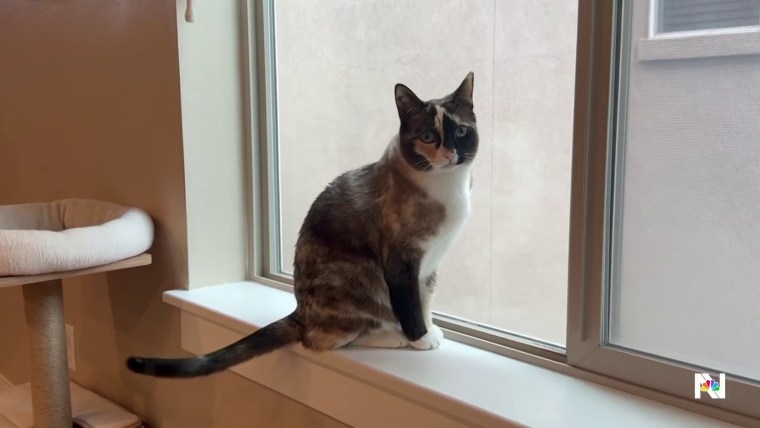
UCLA hit by violent confrontations between protest groups

Some new NFL faces have never played competitive football

In major shift, Biden Administration to change marijuana classification
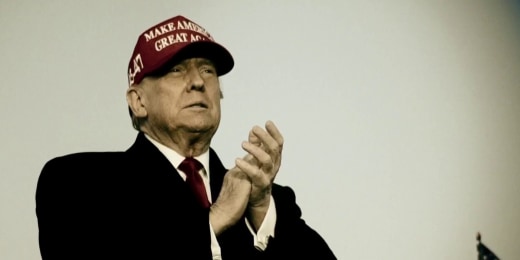
In interview, former President Trump lays out agenda for a possible second term

Scramble for abortions in Florida on eve of restrictive new law

New phase in Russia's misinformation campaign against U.S., sources say

Four officers killed in North Carolina shooting identified

Columbia threatens to expel students who took over building
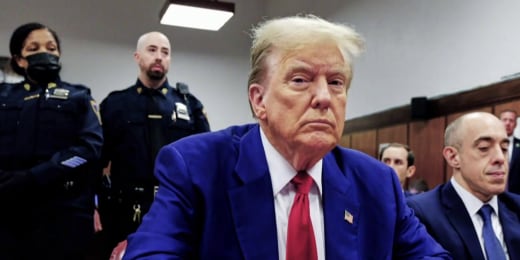
Trump fined $9,000 for violating judge's gag order

At least 5 killed after violent tornado outbreak
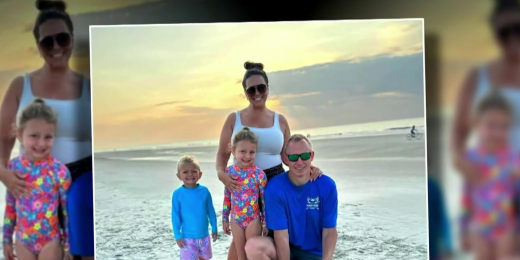
Four Americans face prosecution in Turks & Caicos

Cat survives unintended 600-mile journey, living up to its 9 lives

U.S. leads urgent diplomatic push for hostage deal

Three members of a U.S. marshals task force shot and killed near Charlotte, N.C., officials say
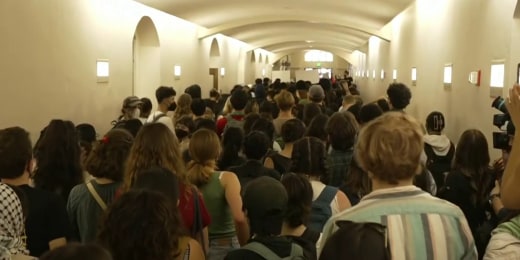
Pro-Palestinian protests and arrests grow on campuses nationwide

Exclusive: Biden Administration orders car braking upgrades to reduce pedestrian deaths

Study finds it's cheaper to rent than buy

Gabby Douglas returns to gymnastics after 8 years, eyeing the 2024 Olympics

More college campus protest arrests over war in Gaza, tensions spill over at UCLA
Nightly news.
A Utah family had no idea that their cat, Galena, got into a return package headed for an Amazon warehouse. Thanks to diligent Amazon worker, a cat-astrophe was averted. NBC News' Blayne Alexander reports. April 29, 2024
Best of NBC News

Senate holds hearing after climate change investigation report released

Meet the Press
Meet the press now – may 1.

Democratic congresswoman: Florida women are in ‘agony’ as state’s six-week abortion ban takes effect

Trump hits the campaign trail in Wisconsin amidst ongoing hush money trial

‘We are here to bury the babies’: Gazan family grieves for two young siblings

Trump: NYPD breaking up Columbia protest was 'beautiful thing to watch'

IMAGES
VIDEO
COMMENTS
The journey an idea takes isn't always linear: ideas have a bumpy journey. The ideas may cycle backward several steps in the process after months of planning. Creators may get less confident in their idea and be less willing to take the risk and put it forward. They must also deal with an onslaught of input and valuable feedback from others ...
The journey from thought to idea to innovation can be divided into several stages: 1. The seed: An idea begins as a seed, a spark of curiosity or a playful exploration of possibilities. Remember the Albert Einstein assertion that "play is the greatest form of research." 2. Interest: The idea fully forms but without a hypothesis of a need. 3.
Each new idea takes a bumpy journey as it evolves, often cycling back and forth as novelty wears, obstacles arise, and risks become clear. Though circumstances may be different, each idea journey shares distinct phases. In the generation phase, innovators need inspiration. Sharing ideas with strangers rather than friends can be beneficial and ...
Each new idea takes a bumpy journey as it evolves, often cycling back and forth as novelty wears, obstacles arise, and risks become clear. Though circumstances may be different, each idea journey shares distinct phases. In the generation phase, innovators need inspiration. Sharing ideas with strangers rather than friends can be beneficial and ...
The Life Cycle of Ideas: It's true to say that just about everyone has had a level up the idea at least once. Breaking down the lifecycle of an idea may look complicated, but once you begin analysing the matter, recognizable patterns quickly become evident. While some lifecycles may pass through multiple iterations, here are just a few levels ...
The evolution of ideas through a structured process is the crucible in which creativity transforms into innovation. By embracing this journey of exploration, iteration, collaboration, and refinement, you can witness the transformation of your initial inspiration into a powerful, impactful idea that shapes the world. Key Takeaways.
idea journey—that is, the path followed by a novel idea from its conception to its successful dis semination. Creativity scholars have primarily underlined the importance of generation, or com ing up with a novel and useful idea (e.g., Amabile, 1983). In contrast, innovation scholars have stressed the importance of the implementation of
Unlike a regular Air or Train journey, which typically proceeds from step 1 to step two, to step 3, and so on till the last destination; The journey of an idea to a successful product is not ...
The journey to execute your ideas becomes more manageable when you divide it into smaller, actionable steps. This explores the process of breaking your vision into bite-sized tasks.
It's a phase where the idea is molded and sharpened. An idea essentially goes through a journey prior to its implementation: The probability of an idea becoming reality is affected by different types of participation. Four different personalities act of the idea during its journey: On the HYPE Innovation blog, I've written about them in ...
In this article, we will discuss the 5 phases of ideation: generating ideas, vetting ideas, developing ideas, testing ideas, and launching ideas. By following these steps, you'll be able to take your idea from concept to reality. Phase 1 is generating new ideas. This is the most important phase, where you come up with as many ideas as possible.
In the Journey of an Idea, Eric used only lines and circles to draw out an idea. That's all you need to get started. 3 Tips to Get Started Using Visuals . Identify the "Minimum Viable Pencil" skills needed for effective visual thinking. This MVP is more basic than you may expect. Find a typical conversation or topic that tends to get ...
Welcome to Bold Minds: The Journey of an Idea 🌐 Are you ready to transform your wildest business dreams into reality? Look no further! Bold Minds is your go...
1. Crafting a Business Plan. A business plan is a roadmap that guides the entrepreneurial journey from idea to execution. It outlines the business's goals, strategies for achieving them, and the time frame for their achievement. It also provides a detailed market analysis, competition, operational structure, and financial projections.
The journey from thought to idea to innovation can be divided into several stages: 1. The seed: An idea begins as a seed, a spark of curiosity or a playful exploration of possibilities. Remember the Albert Einstein assertion that "play is the greatest form of research." 2. Interest: The idea fully forms but without a hypothesis of a need. 3.
Namely, the journey of an embodied idea is influenced by stimulating spaces and collaborative socio-cultural environment which ignite the actors' desire to create. This desire, in turn, unfolds into multiple ideational pathways paved with research strategies (e.g., improvisation, constraints, variability) and emotions (i.e., pleasant and ...
The journey to drug approval begins with the drug sponsor having an idea about a new compound. Perhaps this new compound has certain qualities that may make it a useful drug to treat bovine ...
Again, an appropriate balance between the challenge provided by the refinement strategy and the actors' resources is key to facilitate the evolution of the embodied idea. At this stage of its journey, the embodied idea is clearly identifiable through the artist body, and its embodied refinement takes a lot of the actors' attention and time.
the idea journey encompassing phases that the literature has so far overlooked can help solve existing tensions. We conceptualize four phases of the journey of an idea from conception to completion: idea generation, idea elaboration, idea championing, and idea implementation. We
Journey of an Idea; ... a Rube Goldberg Machine - a system of improbable contraptions each triggering the next in a series of chain reactions - ideas are generated inside our brain following tortuous paths. While a machine of this kind would be completely inefficient in the physical world, an idea is different: inventions thrive on complexity ...
Congratulations! you have arrived at this stage of the journey. The uniqueness of this journey. Unlike a regular Air or Train journey, which typically proceeds from step 1 to step two, to step 3, and so on till the last destination; The journey of an idea to a successful product is not always linear. Sometimes jumping back to the previous step ...
On one level, Anne Hathaway's new movie, "The Idea of You," which arrives on Prime Video on May 2 and is directed by Michael Showalter, couldn't be more straightforward. It's an ...
The Idea of You offers a fresh take on a well-worn story, focusing on emotional connection over power dynamics.; Anne Hathaway's character undergoes a compelling coming-of-age journey, challenging ...
The journey commences with the germination of an idea, a spark of imagination nestled within the mind's fertile soil. This nascent concept, akin to a seed, carries the potential for profound growth and transformation. The seeds of innovation find their conduit through the intricate tendrils of generative AI, a powerful force that acts as both ...
By leveraging Copilot agents as a second brain, developers will have AI assistance from the very beginning of an idea. …Workspace builds the full plan. From there, Copilot Workspace offers a step-by-step plan to solve the issue based on its deep understanding of the codebase, issue replies, and more. It gives you everything you need to ...
The idea is that pushing oneself will be hard, and it will sometimes be painful, or even result in failure, but that's OK because it leads to growth. ... Embark on a journey of continuous learning: from prepping for checkrides, perfecting instrument approaches, to proficiency flights. Enhance your aviation skills here!
Anne Hathaway is getting candid once again about her sobriety journey. In new interviews to promote her new film The Idea of You, the actor announced that she had recently celebrated being five ...
A recent MOAA webinar highlighted some of the assistance available to these veterans via the D'Aniello Institute for Veterans and Military Families (IVMF) at Syracuse University, programs that can help entrepreneurs no matter where their business, or business idea, stands: On the Drawing Board
The Idea of You, 2024. Directed by Michael Showalter. Starring Anne Hathaway, Nicholas Galitzine, Ella Rubin, Annie Mumolo, Reid Scott, Perry Mattfeld, Jordan Aaron ...
A Utah family had no idea that their cat, Galena, got into a return package headed for an Amazon warehouse. Thanks to diligent Amazon worker, a cat-astrophe was averted. NBC News' Blayne Alexander ...